List of World Heritage Sites in the Americas
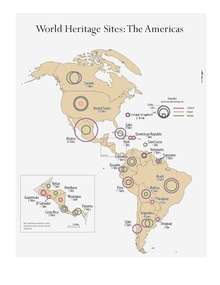
Proportional symbol map of World Heritage sites in the Americas. Labeled with country name, total sites by country. Ring symbols indicate site type
This is a list of UNESCO World Heritage Sites in the Americas (North America, Central America, South America, and the Caribbean). Greenland has been included here as part of North America despite its cultural and political associations with Europe. Mexico leads the Americas hosting 34 sites, and is ranked seventh in the world.
Legend
- Site; as per officially inscribed name[1]
- Location; at city, regional, or provincial level and geocoordinates
- Criteria; as defined by the World Heritage Committee[2]
- Area; in hectares and acres. If available, the size of the buffer zone has been noted as well. A value of zero implies that no data has been published by UNESCO
- Year; during which the site was inscribed to the World Heritage List
- Description; brief information about the site, including reasons for qualifying as an endangered site, if applicable
World Heritage Sites
† In danger
* Trans-border site
| Site | Image | Location | Criteria | Area ha (acre) |
Year | Description | Refs |
|---|---|---|---|---|---|---|---|
| Agave Landscape and Ancient Industrial Facilities of Tequila | 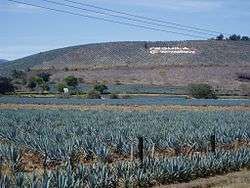 |
Jalisco, 20°51′47″N 103°46′43″W / 20.86306°N 103.77861°W |
Cultural: (ii), (iv), (v), (vi) |
34,019 (84,060); buffer zone 51,261 (126,670) | 2006 | The site consists of a living, working landscape of blue agave fields and distilleries in Tequila, El Arenal and Amatitán where tequila is produced. It reflects more than 2,000 years of commercial use of the agave plant. | [3] |
| Alejandro de Humboldt National Park |  |
Holguín and Guantánamo, 20°27′N 75°0′W / 20.450°N 75.000°W |
Natural: (ix), (x) |
69,341 (171,350); buffer zone 34,330 (84,800) | 2001 | The park exhibits a wide array of geology types. It contains many biological species, including 16 of Cuba's 28 endemic plant species, as well as animal species such as the endangered Cuban solenodon. | [4] [5] |
| Ancient Maya City and Protected Tropical Forests of Calakmul, Campeche |  |
Campeche, 18°7′21″N 89°47′0″W / 18.12250°N 89.78333°W |
Mixed: (i), (ii), (iii), (iv) |
3,000 (7,400); buffer zone 147,195 (363,730) | 2002 | Calakmul is an important Maya site with a number of well-preserved monuments that bear testimony to twelve centuries of Maya cultural and political development. | [6] |
| Antigua Guatemala | 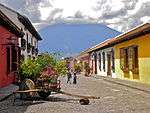 |
Sacatepéquez Department, 14°34′N 90°40′W / 14.567°N 90.667°W |
Cultural: (ii), (iii), (iv) |
49 (120) | 1979 | Founded in the early 16th century, Antigua was the capital of the Kingdom of Guatemala and its cultural, economic, religious, political and educational centre until a devastating earthquake in 1773. Its principal monuments have been preserved largely as ruins and are an excellent example of Spanish colonial architecture. | [7] |
| Aqueduct of Padre Tembleque Hydraulic System | |
Hidalgo and Estado de México, 19°50′07″N 98°39′45″W / 19.835278°N 98.662567°W |
Cultural: (i), (ii), (iv) |
6,540 (16,200); buffer zone 34,820 (86,000) | 2015 | [8] | |
| Archaeological Landscape of the First Coffee Plantations in the South-East of Cuba |  |
Santiago de Cuba and Guantánamo, 20°00′21″N 75°37′4″W / 20.00583°N 75.61778°W |
Cultural: (iii), (iv) |
81,475 (201,330) | 2000 | During the 19th and early 20th centuries, eastern Cuba was primarily involved with coffea cultivation. The remnants of the plantations display the techniques used in the difficult terrain, as well as the economic and social significance of the plantation system in Cuba and the Caribbean. | [9] |
| Archaeological Monuments Zone of Xochicalco | |
Miacatlán, Morelos 18°48′37″N 99°16′30″W / 18.81028°N 99.27500°W |
Cultural: (iii), (iv) |
708 (1,750) | 1999 | Xochicalco is a well-preserved example of a fortified settlement from the epiclassical period (650–900), the time at which earlier powers such as Teotihuacan ceased to exist and cultural re-grouping took place. | [10] |
| Archaeological Park and Ruins of Quiriguá | |
Izabal Department, 15°16′14″N 89°2′25″W / 15.27056°N 89.04028°W |
Cultural: (i), (ii), (iv) |
— | 1981 | Quiriguá is an ancient Maya archaeological site that flourished during the Late Classic. The ruins of the site contain outstanding carved stelae and sculpted calendars. | [11] |
| Archaeological Site of Panamá Viejo and Historic District of Panama City | 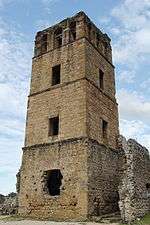 |
Panamá District, Panamá Province, 9°00′24″N 79°29′06″W / 9.00667°N 79.48500°W |
Cultural: (ii), (iv), (vi) |
57 (140) | 1997 [nb 1] |
Founded in 1519, Panamá Viejo was the first European settlement on the Pacific coast of the Americas. The Historic District is a 17th-century replacement of the original town and preserves its street plan, architecture and blend of Spanish, French and early American styles. | [12] [13] |
| Archaeological Zone of Paquimé, Casas Grandes |  |
Chihuahua, 30°22′33″N 107°57′20″W / 30.37583°N 107.95556°W |
Cultural: (iii), (iv) |
— | 1998 | The adobe architecture of Paquimé Casas Grandes bear testimony to a pre-Hispanic culture in northern Mexico located between the Pueblo culture and more advanced Mesoamerican civilizations. | [14] |
| Archipiélago de Revillagigedo | 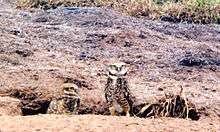 |
19°N 111°W / 19°N 111°W |
Natural: (vii), (ix), (x) |
636,685 (1,573,280) | 2016 | [15] | |
| Area de Conservación Guanacaste | 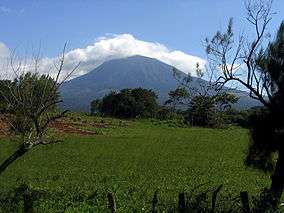 |
Guanacaste and Alajuela Provinces, 10°51′N 85°37′W / 10.850°N 85.617°W |
Natural: (ix), (x) |
147,000 (360,000) | 1999 [nb 2] |
Stretching from the Pacific across the Cordillera de Guanacaste to the Atlantic, the site contains a range of habitats, including some of the most pristine wetland forests worldwide and the best dry forest habitats in Central America; that provide space for several threatened plant and animal species such as the saltwater crocodile, leatherback sea turtle, jaguar, jabiru, mahogany or guayacán. | [16] |
| Atlantic Forest South-East Reserves | |
Paraná, São Paulo and Rio de Janeiro states, 24°10′S 48°0′W / 24.167°S 48.000°W |
Natural: (vii), (ix), (x) |
468,193 (1,156,930); buffer zone 1,223,557 (3,023,480) | 1999 | The site comprises some of the last remaining Atlantic Forests and shows a very high diversity with many rare and endemic species. As such it is of high interest both for scientists and for conservation. | [17] |
| Belize Barrier Reef Reserve System† | |
Belize, Stann Creek and Toledo Districts, 17°19′N 87°32′W / 17.317°N 87.533°W |
Natural: (vii), (ix), (x) |
96,300 (238,000) | 1996 | The Belize Barrier Reef Reserve System is the largest reef system on the Northern Hemisphere and harbors several threatened species including sea turtles, manatees and the American crocodile. The site has been listed as endangered since 2009 due to mangrove cutting and overdevelopment. | [18] [19] |
| Blue and John Crow Mountains | 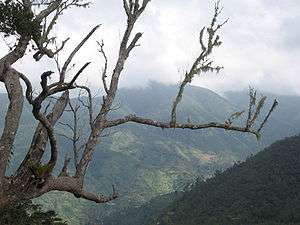 |
18°04′39″N 76°34′16″W / 18.077500°N 76.571111°W |
Mixed: (iii), (vi), (x) |
26,252 (64,870); buffer zone 28,494 (70,410) | 2015 | [20] | |
| Brasília |  |
Federal District, 15°47′S 47°54′W / 15.783°S 47.900°W |
Cultural: (i), (iv) |
— | 1987 | Planned and developed by Lúcio Costa and Oscar Niemeyer in 1956, Brasília was created ex nihilo in order to move the capital from Rio de Janeiro to a more central position. Together with Chandigarh in India it is the only place where Corbusier's design principles of urbanism have been applied on large scale. | [21] |
| Brazilian Atlantic Islands: Fernando de Noronha and Atol das Rocas Reserves |  |
Pernambuco and Rio Grande do Norte, 3°51′29″S 32°25′30″W / 3.85806°S 32.42500°W |
Natural: (vii), (ix), (x) |
42,270 (104,500); buffer zone 140,713 (347,710) | 2001 | As one of the few insular habitats in the South Atlantic, the site is essential as feeding ground and reproduction space for marine organisms including endangered and threatened species, most notably the hawksbill sea turtle. | [22] |
| Brimstone Hill Fortress National Park |  |
Saint Kitts, 17°20′49″N 62°50′14″W / 17.34694°N 62.83722°W |
Cultural: (iii), (iv) |
— | 1999 | Built during the 17th and 18th centuries by African slaves in a period of European colonial expansion, the fortress is an exceptionally well preserved example of British military architecture in the Caribbean. | [23] |
| Cahokia Mounds State Historic Site | |
Illinois, 38°39′31″N 90°3′41″W / 38.65861°N 90.06139°W |
Cultural: (iii), (iv) |
— | 1982 | The ancient city of Cahokia was the cultural, religious, and economic centre of the Mississippian culture. It was the earliest and largest pre-Columbian settlement north of Mexico. | [24] |
| Camino Real de Tierra Adentro |  |
22°36′N 102°23′W / 22.600°N 102.383°W |
Cultural: (ii), (iv) |
3,102 (7,670); buffer zone 268,057 (662,380) | 2010 | The site consists of a 1,400 km (870 mi) long section of a 2,600 km (1,600 mi) long trade route ("Silver Road") that was used from the mid-16th to 19th century to transport mainly silver from mines in northern Mexico and mercury imported from Europe. In addition to the road, associated properties such as five urban centres[nb 3] that have been designated separately as World Heritage Sites, religious and other buildings are included in the nomination. | [25] |
| Canadian Rocky Mountain Parks | 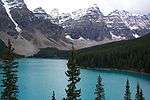 |
Alberta and British Columbia, 51°25′N 116°29′W / 51.417°N 116.483°W |
Natural: (vii), (viii) |
2,306,884 (5,700,430) | 1984 [nb 4] |
With high peaks, glaciers, lakes, waterfalls, canyons and limestone caves, the national parks that make up this site exemplify the exceptional features of the Rocky Mountains. Furthermore, one of the world's most celebrated fossil fields, the Burgess Shale Formation is located within the inscribed property. | [26] [27] |
| Canaima National Park |  |
Bolívar, 5°20′N 61°30′W / 5.333°N 61.500°W |
Natural: (vii), (viii), (ix), (x) |
3,000,000 (7,400,000) | 1994 | The park is characterized by table-top mountains (tepui) that cover 65% of the area and are of both geological and biological interest, providing habitat to a large number of endemic species. Angel Falls, the world's highest waterfall is included in the property. | [28] |
| Carlsbad Caverns National Park |  |
New Mexico, 32°10′0″N 104°23′0″W / 32.16667°N 104.38333°W |
Natural: (vii), (viii) |
18,926 (46,770) | 1995 | More than 80 limestone caves notable for their size and decorative rock formations (speleothems), some of which are assisted by bacteria, are included in the property. Their ease of access facilitates scientific research. | [29] |
| Central Amazon Conservation Complex | 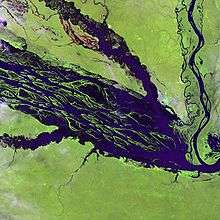 |
State of Amazonas, 2°20′0″S 62°0′30″W / 2.33333°S 62.00833°W |
Natural: (ix), (x) |
5,323,018 (13,153,460) | 2000 [nb 5] |
As the largest protected area in the Amazon basin, the site is notable for its high biodiversity, range of habitats such as várzea and igapó forests and number of endangered species. It has been recognized by various conservation agencies as a high priority region.[nb 6] | [30] [31] |
| Central Suriname Nature Reserve | 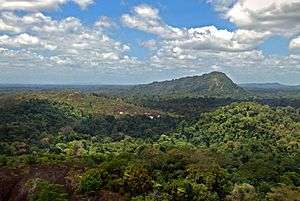 |
Sipaliwini District, 4°0′N 56°30′W / 4.000°N 56.500°W |
Natural: (ix), (x) |
1,600,000 (4,000,000) | 2000 | The site comprises a large undisturbed tract of tropical forst with high biodiversity, many endemic and threatened species. Due to topography and the range of soil conditions, it has various ecoregions. | [32] |
| Central University City Campus of the Universidad Nacional Autónoma de México (UNAM) |  |
Mexico City, 19°19′56″N 99°11′17″W / 19.33222°N 99.18806°W |
Cultural: (i), (ii), (iv) |
177 (440); buffer zone 1,102 (2,720) | 2007 | Built from 1949 and 1952 by more than 60 architects, the buildings, open spaces and sports facilities combine modern architecture with references to local pre-Hispanic traditions. They showcase universal ideals such as access to education and improvement in the quality of life that were prevalent in post-revolutionary Mexico. | [33] |
| Cerrado Protected Areas: Chapada dos Veadeiros and Emas National Parks |  |
Central Brazil Plateau, State of Goiás, 14°0′20″S 47°41′5″W / 14.00556°S 47.68472°W |
Natural: (ix), (x) |
367,356 (907,760) | 2001 | The two parks are characteristic of the cerrado, one of the world's oldest tropical ecosystems and an important refuge for species in times of climate change. | [34] |
| Chaco Culture |  |
New Mexico, 36°3′50″N 107°58′15″W / 36.06389°N 107.97083°W |
Cultural: (iii) |
— | 1987 | Notable for its monumental buildings, the site bears testimony to a Pueblo culture that dominated large parts of present-day south-western United States from the mid-9th to early 13th centuries. | [35] |
| Chan Chan Archaeological Zone† | La Libertad, 8°6′S 79°5′W / 8.100°S 79.083°W |
Cultural: (i), (iii) |
600 (1,500) | 1986 | The city of Chan Chan served as the capital of the Chimú culture. The Chimú kingdom developed along the coast of northern Peru. Chan Chan is divided into nine walled units indicating political and social division. The Chimú were conquered by the Inca in 1470. The site was listed to the List of World Heritage in Danger when it was first inscribed, as the adobe constructions are easily damaged by heavy rain and erosion. | [36] [37] [38] | |
| Chavín (Archaeological Site) | Huari Province, Ancash, 9°35′34″S 77°10′42″W / 9.59278°S 77.17833°W |
Cultural: (iii) |
— | 1985 | The Chavín culture developed in the Andean highlands between 1500 and 300 BC, and the site now known as Chavín de Huantar served as the center. The site consists of a complex of terraces and squares cut from rock. It is believed the Chavín were primarily a religious-based society whose influence resulted from their culture, rather than aggressive expansion. | [39] [40] | |
| Churches of Chiloé | |
Chiloé Province, Los Lagos Region, 42°30′0″S 73°46′0″W / 42.50000°S 73.76667°W |
Cultural: (ii), (iii) |
— | 2000 | The churches are the most prominent example of Chilota wooden architecture fusing European and indigenous traditions. They are a result of 17th and 18th century Jesuit missions. | [41] |
| City of Cuzco | 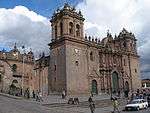 |
Cuzco, 13°31′20″S 71°59′0″W / 13.52222°S 71.98333°W |
Cultural: (iii), (iv) |
— | 1983 | Cuzco was developed by the Inca king Pachacutec, who ruled the Kingdom of Cuzco as it expanded to become the Inca Empire in the 15th century. It became the most important city of the Inca Empire, divided into distinct areas for religious and administrative use, and surrounded by an organized system of agriculture, artisan, and industrial uses. After the Spanish conquered the empire in the 16th century, they built Baroque churches and buildings over the Inca ruins. | [42] |
| City of Potosí | 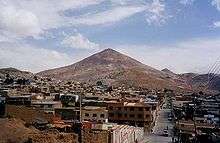 |
Potosí, Potosí Department, 19°35′1″S 65°45′11″W / 19.58361°S 65.75306°W |
Cultural: (ii), (iv), (vi) |
130 (320) | 1987 | Following the discovery of the New World's largest silver reserves in the mid-16th century, Potosí was regarded as the world's largest industrial complex of the time. The site contains industrial facilities of the Cerro Rico, colonial public and residential architecture. | [43] |
| City of Quito | 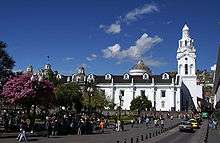 |
Quito, Quito Canton, Pichincha Province, 0°0′14″N 78°30′0″W / 0.00389°N 78.50000°W |
Cultural: (ii), (iv) |
320 (790) | 1978 | Built in Spanish colonial style, the former capital of the Royal Audiencia of Quito.The Historic Center of Quito is the most original and best preserved historic center of its kind in Latin America. | [44] |
| Ciudad Universitaria de Caracas |  |
Municipality of Libertador, Caracas, 10°29′27″N 66°53′26″W / 10.49083°N 66.89056°W |
Cultural: (i), (iv) |
— | 2000 | Designed by Carlos Raúl Villanueva, the university campus is considered a masterpiece of early 20th century architecture and urban planning. It derives from colonial traditions, providing an airy solution well suited to the tropical climate. | [45] |
| Cocos Island National Park |  |
Puntarenas Province, 5°32′N 87°4′W / 5.533°N 87.067°W |
Natural: (ix), (x) |
199,790 (493,700) | 1997 [nb 7] |
As the only island in the tropical eastern Pacific, Cocos Island provides unique marine habitats for large pelagic fish such as sharks, tuna, dolphins or rays. | [46] [47] |
| Coffee Cultural Landscape of Colombia |  |
5°28′N 75°41′W / 5.467°N 75.683°W |
Cultural: (v), (vi) |
141,120 (348,700); buffer zone 207,000 (510,000) | 2011 | The 100-year-old coffee cultivation is emblematic of Colombian culture and has impacted cultural and social traditions in music, architecture, cuisine, education and others. | [48] |
| Coiba National Park and its Special Zone of Marine Protection | |
Veraguas and Chiriquí Provinces, 7°26′N 81°46′W / 7.433°N 81.767°W |
Natural: (ix), (x) |
270,125 (667,490) | 2005 | The park protects islands and marine areas in the Gulf of Chiriquí and is home to an exceptionally large number of endemic mammals, birds and plants as well as to a several threatened species. The marine ecosystem is characterized by a very large biodiversity with 760 species of marine fishes, 33 species of sharks and 20 species of cetaceans. | [49] |
| Colonial City of Santo Domingo | |
Distrito Nacional, 18°29′0″N 69°55′0″W / 18.48333°N 69.91667°W |
Cultural: (ii), (iv), (vi) |
93 (230) | 1990 | Santo Domingo was founded in 1498 shortly after the arrival of Christopher Columbus on the island and had the first cathedral, hospital, customs house and university built in the New World. Its grid patterned town plan became the model for other colonial towns in the Americas. | [50] |
| Coro and its Port | |
Falcón, 11°24′N 69°41′W / 11.400°N 69.683°W |
Cultural: (iv), (v) |
107 (260); buffer zone 107 (260) | 1993 | Founded in 1527, Coro was one of the earliest colonial towns in the Americas. Its earthen constructions are the only extant example of fusion of Caribbean with Spanish Mudéjar and Dutch architecture. The site has been listed as endangered since 2005 following damage due to heavy rain and the construction of various structures in the buffer zone. | [51] [52] |
| Cueva de las Manos, Río Pinturas |  |
Santa Cruz Province, 47°9′0″S 70°40′0″W / 47.15000°S 70.66667°W |
Cultural: (iii) |
— | 1999 | Named for the paintings of hands, the cave contains rock art from between 13,000 and 9,500 years ago that bear witness to the earliest human inhabitants in South America. | [53] |
| Darien National Park | 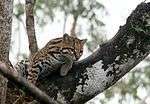 |
Darién Province, 7°44′N 77°33′W / 7.733°N 77.550°W |
Natural: (vii), (ix), (x) |
597,000 (1,480,000) | 1981 | Situated on the border between South and Central America, the park consists of a wide range of habitats including sandy and rocky coastlines, mangroves, swamps, upland and lowland tropical forests. Two Indian tribes, the Chocó and the Kuna live in the property. | [54] |
| Desembarco del Granma National Park | 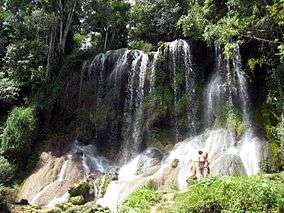 |
Granma, 19°53′N 77°38′W / 19.883°N 77.633°W |
Natural: (vii), (viii) |
32,576 (80,500) | 1999 | The park features a unique karst topography with features such as terraces, cliffs, and waterfalls. | [55] [56] |
| Dinosaur Provincial Park | 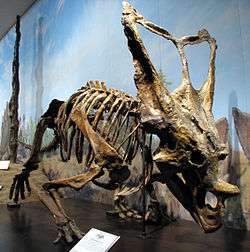 |
Alberta, 50°46′4″N 111°29′32″W / 50.76778°N 111.49222°W |
Natural: (vii), (viii) |
7,493 (18,520) | 1979 | The park is noted for the beauty of its badland landscape and as a major fossil site. Specimens of every group of cretaceous dinosaurs have been found here including those of 35 species dating more than 75 Million years ago. | [57] |
| Discovery Coast Atlantic Forest Reserves |  |
Atlantic Coast, Bahia and Espírito Santo states, 16°30′S 39°15′W / 16.500°S 39.250°W |
Natural: (ix), (x) |
111,930 (276,600) | 1999 | The site comprises some of the last remaining Atlantic Forests and shows a very high diversity with many rare and endemic species. As such it is of high interest both for scientists and for conservation. | [58] |
| Earliest 16th-Century Monasteries on the Slopes of Popocatepetl | |
Morelos and Puebla, 18°56′N 98°54′W / 18.933°N 98.900°W |
Cultural: (ii), (iv) |
— | 1994 | The site comprises 14 monasteries built by Augustinians, Franciscans and Dominicans near Popocatépetl volcano. Stylistically they are characterized by an emphasize on open spaces, a concept that influenced architecture in Mexico and beyond. | [59] |
| El Pinacate and Gran Desierto de Altar Biosphere Reserve |  |
Sonora, 32°00′00″N 113°55′00″W / 32.00000°N 113.91667°W |
Natural: (vii), (viii), (x) |
714,566 (1,765,730); buffer zone 354,871 (876,910); | 2013 | The 714,566-hectare site comprises two distinct parts: the dormant volcanic Pinacate Shield of black and red lava flows and desert pavements to the east, and, in the west, the Gran Altar Desert with its ever-changing and varied sand dunes that can reach a height of 200 metres. This landscape of dramatic contrast notably features linear, star and dome dunes as well as several arid granite massifs, some as high as 650 metres. | [60] |
| El Tajin, Pre-Hispanic City | 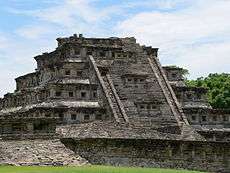 |
Veracruz, 20°28′35″N 97°22′39″W / 20.47639°N 97.37750°W |
Cultural: (iii), (iv) |
— | 1992 | Flourishing from the early 9th to early 13th century, El Tajin is the prime site of the period between the Teotihuacan and Tenochtitlan empires. | [61] |
| Everglades National Park† | 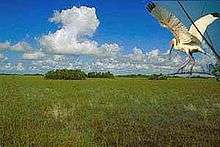 |
Florida, 25°19′N 80°56′W / 25.317°N 80.933°W |
Natural: (viii), (ix), (x) |
592,920 (1,465,100) | 1979 | The vast wetlands and coastal/marine habitats of the park have made it a sanctuary for many animals including 20 rare, endangered and threatened species such as the Florida panther and the manatee. The site has been endangered from 1993–2007 following damage due to Hurricane Andrew and since 2010 due to continued degradation and a loss of marine habitat. | [62] [63] [64] |
| Fortifications on the Caribbean Side of Panama: Portobelo-San Lorenzo † | 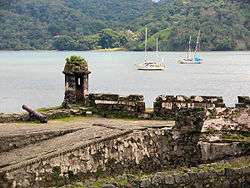 |
Colón Province, 9°33′14″N 79°39′21″W / 9.55389°N 79.65583°W |
Cultural: (i), (iv) |
— | 1980 | As outstanding examples of Spanish military architecture, the forts were constructed in the 17th and 18th centuries to protect the Isthmus of Panama which had been of great importance to European colonial trade. | [65] |
| Franciscan Missions in the Sierra Gorda of Querétaro | |
Querétaro, 21°12′16″N 99°27′51″W / 21.20444°N 99.46417°W |
Cultural: (ii), (iii) |
104 (260) | 2003 | These five missions were built jointly with the indios towards the final phase of Christianization of Mexico in the mid-18th century. They played an important role in the further evangalization of California, Arizona and Texas. | [66] |
| Fray Bentos Cultural-Industrial Landscape | |
Río Negro Department, 33°07′04″S 58°19′54″W / 33.117778°S 58.331667°W |
Cultural: (ii), (iv) |
274 (680); buffer zone 2,128 (5,260) | 2015 | [67] | |
| Fuerte de Samaipata |  |
Florida Province, Santa Cruz Department, 18°10′S 63°49′W / 18.167°S 63.817°W |
Cultural: (ii), (iii) |
— | 1998 | Samaipata consists of remains of a town, and more prominently a large sculpted rock (14th–16th centuries) thought to have been the ceremonial centre of a pre-Hispanic culture. | [68] |
| Galápagos Islands |  |
Galápagos Province, 0°40′S 90°30′W / 0.667°S 90.500°W |
Natural: (vii), (viii), (ix), (x) |
14,066,514 (34,759,110) | 1978 | This remote archipelago of volcanic islands is famed for the high degree of endemism and is associated with Charles Darwin whose observations here contributed to the inception of Darwin's theory of evolution by natural selection. The site had been listed as endangered for various reasons[nb 8] 2007–2010. | [69] [70] [71] [72] |
| Grand Canyon National Park | 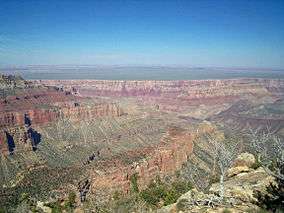 |
Arizona, 36°6′3″N 112°5′26″W / 36.10083°N 112.09056°W |
Natural: (vii), (viii), (ix), (x) |
493,077 (1,218,420) | 1979 | Plunging down 1,500 m (4,900 ft) to the Colorado River, it is one of the world's most spectacular gorges. In addition the varying elevations of the canyon walls have created diverse ecosystems for numerous endemic, rare and endangered species. The river's erosion has exposed soils from the Precambrian to the Cenozoic often including a rich fossil assembly. | [73] |
| Great Smoky Mountains National Park | |
Tennessee and North Carolina, 35°36′N 83°26′W / 35.600°N 83.433°W |
Cultural: (vii), (viii), (ix), (x) |
209,000 (520,000) | 1983 | With more than 3,500 plant species, the park is among the largest remnants of Arcto-Tertiary Geoflora. It is also home to the world's largest number of salamander species and famous for its mist-shrouded virgin forests. | [74] |
| Gros Morne National Park |  |
Newfoundland and Labrador, 49°37′N 57°32′W / 49.617°N 57.533°W |
Natural: (vii), (viii) |
180,500 (446,000) | 1987 | With deep ocean crust and rocks of the earth's mantle lying exposed, the park illustrates continental drift. Landlocked freshwater fjords, glacier-scoured headlands in an ocean setting contribute to the natural beauty of this wilderness area. | [75] |
| Head-Smashed-In Buffalo Jump | 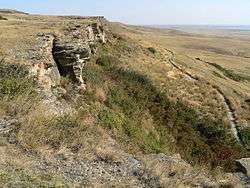 |
Alberta 49°44′58″N 113°37′26″W / 49.74944°N 113.62389°W |
Cultural: (vi) |
— | 1981 | The property consists of remains of a camp, of trails and a tumulus of bones of the American bison bearing testimony to nearly 6000 years of communal hunting in which the bisons were driven over a cliff, a practice known as buffalo jump. | [76] |
| Historical Centre of the City of Arequipa | Arequipa, 16°24′0″S 71°32′0″W / 16.40000°S 71.53333°W |
Cultural: (i), (iv) |
167 (410); buffer zone 165 (410) | 2000 | Arequipa is built primarily on top of sillar, a white volcanic rock, the product of nearby El Misti volcano. The architecture of the city is known for its combination of traditional indigenous styles with the new techniques of the European colonial settlers. | [77] | |
| Historic Area of Willemstad, Inner City and Harbour, Curaçao |  |
Willemstad, Curaçao, Netherlands Antilles 12°6′7″N 68°54′8″W / 12.10194°N 68.90222°W |
Cultural: (ii), (iv), (v) |
86 (210); buffer zone 87 (210) | 1997 | The architecture of the 17th-century Dutch trading settlement Willemstad combines styles from the Netherlands with Spanish and Portuguese colonial towns. | [78] |
| Historic Bridgetown and its Garrison | %2C_Barbados.jpg) |
Bridgetown 13°5′48″N 59°36′50″W / 13.09667°N 59.61389°W |
Cultural: (ii), (iii), (iv) |
187 (460); buffer zone 321 (790) | 2011 | Bridgetown is an excellent example of a British colonial settlement built from the 17th to 19th century. Unlike Dutch and Spanish settlements of the area, the town is not laid out on a grid plan but follows a serpentine urban design. | [79] |
| Historic Centre of Camagüey |  |
Camagüey, 21°22′43″N 77°55′7″W / 21.37861°N 77.91861°W |
Cultural: (iv), (v) |
54 (130); buffer zone 276 (680) | 2008 | Camagüey is among the first seven villages founded by the Spanish in Cuba, first settled in 1528. The irregular organization of the city is distinct from the typical, orderly construction of most other Spanish settlements. This maze-like style was influenced by medieval European ideas and traditional construction methods of early immigrant masons and construction workers. | [80] |
| Historic Centre of Salvador de Bahia |  |
Bahia state, 12°58′0″S 38°30′0″W / 12.96667°S 38.50000°W |
Cultural: (iv), (vi) |
— | 1985 | The colonial old town of the first Brazilian capital and town of the first slave market in the New World, has preserved a large number of brightly colored Renaissance houses decorated with stucco work from the 16th to 18th centuries. | [81] |
| Historic Centre of Santa Ana de los Ríos de Cuenca | 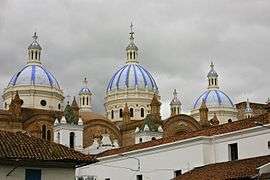 |
Azuay Province, 2°53′0″S 78°59′0″W / 2.88333°S 78.98333°W |
Cultural: (ii), (iv), (v) |
200 (490) | 1999 | Founded in 1557 on an orthogonal town plan, the townscape of Cuenca is an expression of the fusion of different societies and cultures and a showcase of Renaissance urban design in Latin America. | [82] |
| Historic Centre of Lima |  |
Lima Province, 12°3′5″S 77°2′35″W / 12.05139°S 77.04306°W |
Cultural: (iv) |
200 (490) | 1988 [nb 9] |
Lima was founded by Francisco Pizarro in 1535 as La Ciudad de los Reyes (City of the Kings). Until the middle of the 18th century, it was the most important city in Spanish South America. The architecture and decoration combine the style of both the local population and Europe, such as in the Monastery of San Francisco, which was the site's original listing in 1988, before it was extended in 1991. | [83] [84] |
| Historic Centre of Mexico City and Xochimilco | |
Mexico City, 19°25′6″N 99°7′58″W / 19.41833°N 99.13278°W |
Cultural: (ii), (iii), (iv), (v) |
— | 1987 | Mexico City, built in the 16th century on the ruins of Tenochtitlan preserves Aztec ruins, the largest cathedral in the Americas and 19th/20th century public architecture. Xochimilco is characterized by a network of canals and artificial islands (chinampas) built in pre-Hispanic times. | [85] |
| Historic Centre of Morelia | 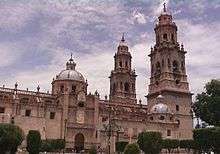 |
Michoacán, 19°42′16″N 101°11′30″W / 19.70444°N 101.19167°W |
Cultural: (ii), (iv), (vi) |
390 (960) | 1991 | Built in the 16th century, Morelia still shows the original street layout and has more than 200 historic buildings constructed of locally available pink stone in a style fusing elements of renaissance, baroque and neo-classicism. | [86] |
| Historic Centre of Oaxaca and Archaeological Site of Monte Albán | 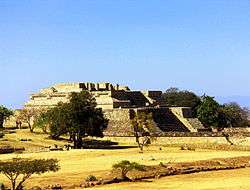 |
Oaxaca, 17°3′43″N 96°43′18″W / 17.06194°N 96.72167°W |
Cultural: (i), (ii), (iii), (iv) |
375 (930); buffer zone 121 (300) | 1987 | The site includes the pre-Columbian ceremonial site Monte Albán occupied during a 1500-year period by Olmecs, Zapotecs and Mixtecs, the colonial town Oaxaca founded in 1529 and the originally Mixtec settlement Cuilapan where Dominicans established a major monastery in the mid-16th century. | [87] |
| Historic Centre of Puebla | |
Puebla, Puebla, 19°2′50″N 98°12′30″W / 19.04722°N 98.20833°W |
Cultural: (ii), (iv) |
597 (1,480); buffer zone 102 (250) | 1987 | Founded in 1531, Puebla is notable for its 16th/17th century cathedral and colonial houses some of which are covered in blue tiles (azulejos). Stylistically the Baroque district of Puebla shows the fusion of European and American elements. | [88] |
| Historic Centre of Santa Cruz de Mompox | 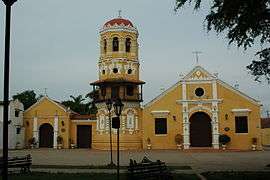 |
Bolívar Department, 9°14′0″N 74°26′0″W / 9.23333°N 74.43333°W |
Cultural: (iv), (v) |
458 (1,130); buffer zone 632 (1,560) | 1995 | Mompox, founded in 1540 on a major river has preserved in its historic centre the colonial past with many buildings still serving their original function. | [89] |
| Historic Centre of São Luís | |
Maranhão state, 2°30′51″S 44°18′9″W / 2.51417°S 44.30250°W |
Cultural: (iii), (iv), (v) |
— | 1997 | São Luís has preserved the complete rectangular town plan and a large number of historical buildings making it a prime example of a Portuguese colonial town. | [90] |
| Historic Centre of the Town of Diamantina |  |
Minas Gerais, 18°40′0″S 43°36′0″W / 18.66667°S 43.60000°W |
Cultural: (ii), (iv) |
29 (72) | 1999 | A well-preserved example of Baroque architecture, this 18th-century colonial town was founded in an inhospitable environment of rocky mountains and became a center of diamond mining in the 18th and 19th centuries. | [91] |
| Historic Centre of the Town of Goiás | 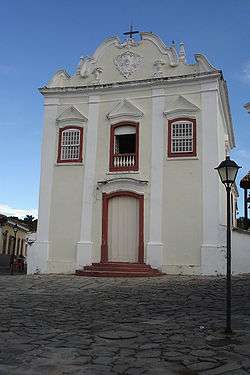 |
Goiás, 15°56′0″S 50°8′0″W / 15.93333°S 50.13333°W |
Cultural: (ii), (iv) |
40 (99); buffer zone 44 (110) | 2001 | Founded in 1727 by the bandeirante explorer Bartolomeu Bueno da Silva, Goiás has preserved much of its colonial heritage and is an example of a European settlement in the interior of South America. | [92] |
| Historic Centre of the Town of Olinda |  |
Pernambuco, 8°0′48″S 34°50′42″W / 8.01333°S 34.84500°W |
Cultural: (ii), (iv) |
120 (300); buffer zone 920 (2,300) | 1982 | Founded in 1537 the town prospered as a centre of sugar-cane production. Following looting by the Dutch in the 17th century, the historic centre dates largely to the 18th century with a harmonious combination of buildings, gardens, churches, convents and chapels. | [93] |
| Historic Centre of Zacatecas | .jpg) |
Zacatecas, Zacatecas, 22°46′0″N 102°33′20″W / 22.76667°N 102.55556°W |
Cultural: (ii), (iv) |
110 (270) | 1993 | Zacatecas prospered as a center of silver production in the 16th and 17th centuries. The designated property comprises religious and secular buildings with most of them dating to the 17th and 18th centuries. | [94] |
| Historic City of Sucre | 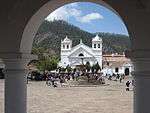 |
Oropeza Province, Chuquisaca Department, 19°2′35″S 65°15′33″W / 19.04306°S 65.25917°W |
Cultural: (iv) |
114 (280) | 1991 | Founded by the Spanish in 1538, Sucre has retained many of its 16th century religious buildings showing the fusion of local and European architectural styles. | [95] |
| Historic District of Old Québec | 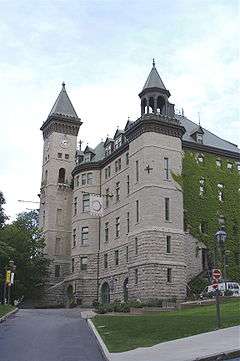 |
Quebec City, Quebec 46°48′34″N 71°12′38″W / 46.80944°N 71.21056°W |
Cultural: (iv), (vi) |
— | 1985 | Founded by the French in the 17th century, the urban ensemble of Old Québec is the most complete example of a European fortified town north of Mexico. | [96] |
| Historic Fortified Town of Campeche | 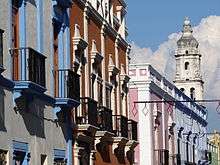 |
Campeche, Campeche, 19°50′47″N 90°32′14″W / 19.84639°N 90.53722°W |
Cultural: (ii), (iv) |
181 (450) | 1999 | Campeche is a typical example of a Baroque Spanish colonial town with a grid layout. Its fortifications built in the 17th and 18th centuries as defense against pirates are an excellent example of military architecture of the time. | [97] |
| Historic Inner City of Paramaribo | 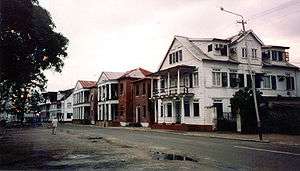 |
Paramaribo District, 5°49′34″N 55°9′0″W / 5.82611°N 55.15000°W |
Cultural: (ii), (iv) |
30 (74); buffer zone 60 (150) | 2002 | Founded as a Dutch colonial town in the 17th century, Paramaribo has preserved its unique street plan with buildings showing the gradual influence of Dutch architectural traditions. | [98] |
| Historic Monuments Zone of Querétaro | 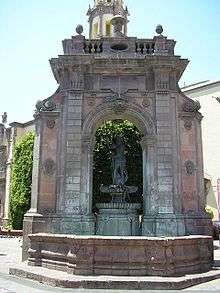 |
Querétaro, Querétaro, 20°35′0″N 100°22′0″W / 20.58333°N 100.36667°W |
Cultural: (ii), (iv) |
— | 1996 | Querétaro has preserved many of its buildings from the 17th and 18th century and is exceptional for its street plan which has both, the grid plan typical of Spanish colonial towns and twisting alleys in the Indian quarters. | [99] |
| Historic Monuments Zone of Tlacotalpan |  |
Tlacotalpan, Veracruz, 18°36′30″N 95°39′30″W / 18.60833°N 95.65833°W |
Cultural: (ii), (iv) |
— | 1998 | The layout and architecture of the property is an exceptionally well-preserved example of Spanish-Caribbean fusion and is characterised by wide streets, low houses in a variety of styles and colors, and many trees. | [100] |
| Historic Quarter of the City of Colonia del Sacramento |  |
Colonia Department, 34°28′4″S 57°51′12″W / 34.46778°S 57.85333°W |
Cultural: (iv) |
16 (40) | 1995 | Founded in 1680 by the Portuguese, the town changed hands between Spanish and Portuguese multiple times during the 17th and 18th centuries and was finally lost to the Spanish. Its well-preserved townscape bears testimony to the fusion of Spanish and Portuguese colonial styles. | [101] |
| Historic Quarter of the Seaport City of Valparaíso |  |
Valparaíso Province, 33°2′26″S 71°37′41″W / 33.04056°S 71.62806°W |
Cultural: (iii) |
23 (57); buffer zone 45 (110) | 2003 | In the late 19th century Valparaíso prospered as a stopover point for ships travelling between the Atlantic and Pacific via the Straits of Magellan. Its historic quarter set on steep hillsides has bears testimony to this early phase of globalization. | [102] |
| Historic Sanctuary of Machu Picchu |  |
Cuzco, 13°7′0″S 72°35′0″W / 13.11667°S 72.58333°W |
Mixed: (i) (iii), (vii), (ix) |
32,592 (80,540) | 1983 | At 2,340 metres (7,680 ft) above sea level, the site of Machu Picchu was constructed as an expansive mountain estate around the middle of the 15th century, and abandoned approximately 100 years later. It includes walls, terraces, and buildings constructed from rock. The city was home to about 1,200 people, mostly priests, women, and children. It was left abandoned prior to the Spanish arrival in Cuzco most likely due to smallpox. | [103] [104] |
| Historic Town of Guanajuato and Adjacent Mines | 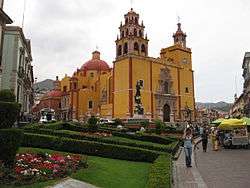 |
Guanajuato, Guanajuato, 21°1′1″N 101°15′20″W / 21.01694°N 101.25556°W |
Cultural: (i), (ii), (iv), (vi) |
190 (470) | 1988 | The prosperity of the town as the largest silver producer in the 18th century is reflected in beautiful Baroque and neo-classical buildings. | [105] |
| Historic Town of Ouro Preto |  |
Minas Gerais, 20°23′20″S 43°30′20″W / 20.38889°S 43.50556°W |
Cultural: (i), (iii) |
— | 1980 | The prosperity of the town as the center of the Brazilian gold rush in the 18th century is reflected in a large number of preserved churches, bridges and fountains many of them designed by the Baroque sculptor Aleijadinho. | [106] |
| Historic Town of St George and Related Fortifications, Bermuda |  |
St. George 32°22′46″N 64°40′40″W / 32.37944°N 64.67778°W |
Cultural: (iv) |
258 (640) | 2000 | The oldest English town in the New World, St George's fortifications bear testimony to the development of English military architecture from the 17th to 20th centuries. | [107] |
| Hospicio Cabañas, Guadalajara |  |
Guadalajara, Jalisco, 20°40′26″N 103°20′23″W / 20.67389°N 103.33972°W |
Cultural: (i), (ii), (iii), (iv) |
— | 1997 | The early 19th century Hospicio is one of the earliest hospital complexes in Spanish America. Its architecture, designed with this purpose in mind, contains several unique features and is notable for the size, simplicity and relationship between open and built spaces. A series of murals by José Clemente Orozco is located within the complex. | [108] |
| Huascarán National Park | Ancash, 9°20′S 77°24′W / 9.333°S 77.400°W |
Natural: (vii), (viii) |
340,000 (840,000) | 1985 | Huascarán National Park is located in the Cordillera Blanca mountain range of the Andes. It surrounds Huascarán, the tallest peak in Peru. The physical environment includes glaciers, ravines, and lakes, while the park is home to several regional animal species. | [109] | |
| Humberstone and Santa Laura Saltpeter Works† | 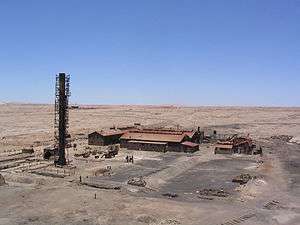 |
Tarapacá, 20°12′30″S 69°47′40″W / 20.20833°S 69.79444°W |
Cultural: (ii), (iii), (iv) |
— | 2005 | Situated in the Atacama Desert, the two saltpeter works are representative of the saltpeter industry that flourished in northern Chile in the 19th and early 20th century and brought together people from different parts of South America and Europe creating a unique culture with its own language and customs. The site has been listed as endangered since 2005 due to damage, vandalism, looting and the general fragile nature of the structures as a result of a 40 years' lack of maintenance. | [110][111] |
| Iguaçu National Park | 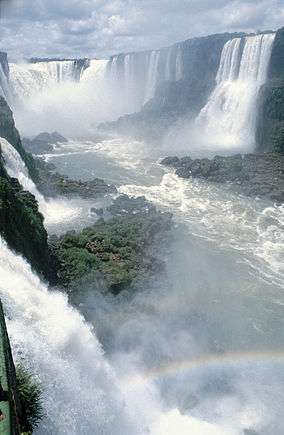 |
Paraná, 25°41′S 54°26′W / 25.683°S 54.433°W |
Natural: (vii), (x) |
170,086 (420,290) | 1986 | Together with Iguazú National Park on the Argentinian side, the park protects Iguazu Falls, one of the world's largest waterfalls, and is home to many rare and endangered species such as giant anteater or the giant otter. The site had been listed as endangered 1999–2001 due to an illegally opened road through the park, dams on the Iguazu River and helicopter flights. | [112] |
| Iguazú National Park | 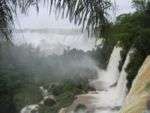 |
Misiones Province, Mesopotamia 25°31′5″S 54°8′0″W / 25.51806°S 54.13333°W |
Natural: (vii), (x) |
55,000 (140,000) | 1984 | Together with Iguaçu National Park on the Brazilian side, the park protects Iguazu Falls, one of the world's largest waterfalls. Its subtropical rainforest is home to more than 2000 species of vascular plants and large mammals such as tapirs, giant anteaters, howler monkeys, ocelots and jaguars. | [113] |
| Ilulissat Icefjord | 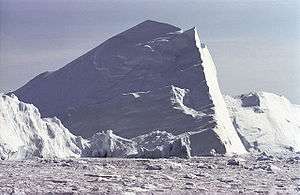 |
Ilulissat, western 69°8′N 49°30′W / 69.133°N 49.500°W |
Natural: (vii), (viii) |
402,400 (994,000) | 2004 | The Jakobshavn Glacier, calves into the Ilulissat fjord is one of the most active glaciers moving at 19 metres/day and accounting for 10% of the Greenlandish calf ice. Similar phenomena exist in Antarctica, however its relative ease of access for scientists and visitors makes it unique in the world. | [114] |
| Independence Hall | 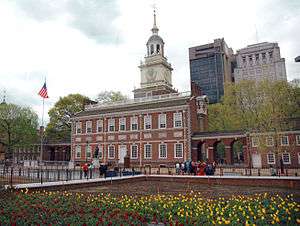 |
Philadelphia, Pennsylvania, 39°56′55″N 75°9′0″W / 39.94861°N 75.15000°W |
Cultural: (vi) |
— | 1979 | Both the Declaration of Independence and the United States Constitution were signed in this building. Concepts of freedom and democracy set forth in these documents have influenced charters of many countries and the UN charter. | [115] |
| Ischigualasto / Talampaya Natural Parks | 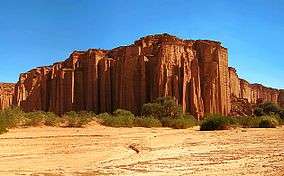 |
San Juan and La Rioja Province 30°0′S 68°0′W / 30.000°S 68.000°W |
Natural: (viii) |
275,369 (680,450) | 2000 | As the most complete continental fossil site of the Triassic period (245–208 million years ago), the propertie's remains of mammals, dinosaurs and plants reveal the evolution of vertebrates. | [116] |
| Islands and Protected Areas of the Gulf of California | |
Baja California, Baja California Sur, Sonora, Sinaloa and Nayarit, 27°38′N 112°33′W / 27.633°N 112.550°W |
Natural: (vii), (ix), (x) |
— | 2005 [nb 10] |
The property has marine and insular habitats including bridge islands[nb 11] and oceanic islands.[nb 12] It constitutes a unique ecoregion of exceptional biodiversity with 695 species of plant, 891 species of fish (90 of which are endemic), 39% of the world's marine mammal species, and a large number of bird species. | [117] [118] |
| Jesuit Block and Estancias of Córdoba |  |
Córdoba 31°25′14″S 64°11′28″W / 31.42056°S 64.19111°W |
Cultural: (ii), (iv) |
— | 2000 | Founded in the early 17th century, this Jesuit reduction has preserved the university, church, residences and five farming estates (estancias), illustrating the missionary and economic activities carried out by the Jesuits over a period of 150 years in the New World. | [119] |
| Jesuit Missions of La Santísima Trinidad de Paraná and Jesús de Tavarangue | |
27°8′S 55°42′W / 27.133°S 55.700°W |
Cultural: (iv) |
— | 1993 | The ruins of these Jesuit reductions bear testimony to the missionary, social and economical activities of the Jesuits in the Rio de la Plata Basin in the 17th and 18th centuries. | [120] |
| Jesuit Missions of Chiquitos | |
Santa Cruz Department, 16°0′S 60°30′W / 16.000°S 60.500°W |
Cultural: (iv), (v) |
— | 1990 | Six settlements in the Chiquitania have been preserved as living heritage of their past as Jesuit reductions in the 17th and 18th centuries. Their churches largely restored in the late 20th century are a fusion of indigenous and European architectural traditions. | [121] |
| Jesuit Missions of the Guaranis: San Ignacio Miní, Santa Ana, Nuestra Señora de Loreto and Santa María Mayor (Argentina), Ruins of São Miguel das Missões (Brazil) | 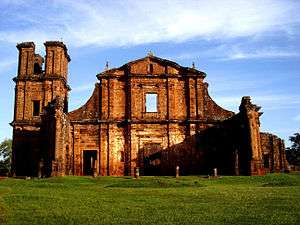 |
Misiones Province, 28°32′36″S 54°15′57″W / 28.54333°S 54.26583°W |
Cultural: (iv) |
— | 1983 [nb 13] |
Each of the five ruined Jesuit missions founded amidst a tropical forest in the land of the Guaraní people in the 17th and 18th centuries is characterized by a specific design. | [122] [123] |
| Joggins Fossil Cliffs | |
Nova Scotia 45°42′35″N 64°26′9″W / 45.70972°N 64.43583°W |
Natural: (viii) |
689 (1,700); buffer zone 29 (72) | 2008 | This paleontological site contains the most complete terrestrial fossil record of the Carboniferous period including tracks of early animals and of the rainforest they lived in. | [124] |
| Joya de Cerén Archaeological Site | 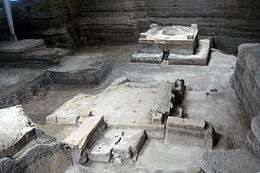 |
Opico, La Libertad Department, 13°49′39″N 89°22′9″W / 13.82750°N 89.36917°W |
Cultural: (iii), (iv) |
— | 1993 | Joya de Cerén are the remains of a pre-Hispanic farming community that has been preserved largely intact buried under a volcanic eruption around 590 AD. It provides valuable archaeological for everyday life in the 6th century. | [125] |
| Kluane / Wrangell-St Elias / Glacier Bay / Tatshenshini-Alsek | 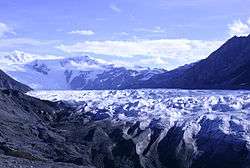 |
British Columbia and Yukon, Alaska, 61°12′N 141°0′W / 61.200°N 141.000°W |
Natural: (vii), (viii), (ix), (x) |
9,839,121 (24,313,000) | 1979 [nb 14] |
These parks comprise the world's largest non-polar icefield, some of the largest glaciers and a tectonically active mountain landscape. They are home to a number of species endangered elsewhere such as bears, wolves, caribou and Dall sheep. | [126] [127] [128] |
| La Fortaleza and San Juan National Historic Site in Puerto Rico | .jpg) |
San Juan, Puerto Rico, 18°28′0″N 66°7′30″W / 18.46667°N 66.12500°W |
Cultural: (vi) |
— | 1983 | Puerto Rico was of prime strategic importance during the American colonial period illustrated by the fortifications built between the 15th and 19th century to protect the harbour of San Juan. | [129] |
| Landscape of Grand Pré | |
Nova Scotia, 45°7′6″N 64°18′26″W / 45.11833°N 64.30722°W |
Natural: (v), (vi) |
1,323 (3,270) | 2012 | [130] | |
| L’Anse aux Meadows National Historic Site |  |
Newfoundland and Labrador 51°28′0″N 55°37′0″W / 51.46667°N 55.61667°W |
Cultural: (vi) |
— | 1978 | These remains of an 11th-century Viking settlement are the first and only known site of Norse presence and the earliest known European settlement in America outside of Greenland. | [131] |
| León Cathedral | |
León 12°26′06″N 86°52′41″W / 12.43500°N 86.87806°W |
Cultural: (ii), (iv) |
0.77 (1.9); buffer zone 13 (32) | 2011 | Built over more than 150 years starting in the mid-18th century, the cathedral's architecture is a fusion of different styles from Baroque to Neoclassicism and an expression of a new Latin American society that developed around the 18th century. | [132] |
| Lines and Geoglyphs of Nazca and Pampas de Jumana | 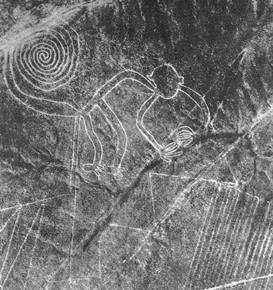 |
Nazca, 14°43′33″S 75°8′55″W / 14.72583°S 75.14861°W |
Cultural: (i), (iii), (iv) |
— | 1994 | The large designs in the Nazca Desert are believed to have been created by the Nazca culture between 400 and 650 AD. They were created by scratching lines into the ground surface. Designs include animals such as a monkey and hummingbird, plants, and geographic shapes on a large scale. It is believed that they served a ritualistic purpose. | [133] [134] |
| Los Glaciares | 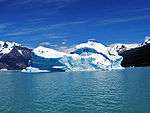 |
Santa Cruz Province 50°0′0″S 73°14′58″W / 50.00000°S 73.24944°W |
Natural: (vii), (viii) |
445,900 (1,102,000) | 1981 | This National Park is of exceptional beauty comprising high peaks, glacial lakes and glaciers, some of which are advancing. | [135] |
| Los Katíos National Park | .jpg) |
Antioquia and Chocó Departments, 7°40′N 77°0′W / 7.667°N 77.000°W |
Natural: (ix), (x) |
72,000 (180,000) | 1994 | Situated at the Darién Gap, Los Katíos comprizes hills, forests and humid plains that are notable for their exceptional bio-diversity including many endangered animal species and endemic plants. The site was listed as endangered from 2009 to 2015 due to deforestation, illegal fishing and hunting, but has now been removed from the endangered sites list. | [136][137] |
| Luis Barragán House and Studio | |
Mexico City, 19°25′6″N 99°11′54″W / 19.41833°N 99.19833°W |
Cultural: (i), (ii) |
0.12 (0.30); buffer zone 23 (57) | 2004 | Built in 1948, the house and studio of Mexican architect Luis Barragán combines traditional and modern influences and is considered a masterpiece of the Modern Movement. | [138] |
| Malpelo Fauna and Flora Sanctuary |  |
Cauca Department, 3°58′N 81°37′W / 3.967°N 81.617°W |
Natural: (vii), (ix) |
857,500 (2,119,000) | 2006 | [139] | |
| Mammoth Cave National Park | 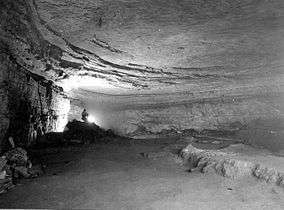 |
Kentucky, 37°11′14″N 86°6′11″W / 37.18722°N 86.10306°W |
Natural: (vii), (viii), (x) |
21,191 (52,360) | 1981 | The longest cave system known in the world. | [140] |
| Manú National Park |  |
Madre de Dios, 12°15′S 71°45′W / 12.250°S 71.750°W |
Natural: (ix), (x) |
1,716,295 (4,241,060) | 1987 [nb 15] |
The park spreads from 150 metres (490 ft) to 4,200 metres (13,800 ft) above sea-level. Manú is home to 1,000 bird species, over 200 species of mammals (100 of which are bats), and over 15,000 species of flowering plants. Prior to being recognized as a World Heritage site, it was designated as a biosphere reserve in 1977. | [141] [142] [143] |
| Maya Site of Copán |  |
Copán Department, 14°51′0″N 89°8′0″W / 14.85000°N 89.13333°W |
Cultural: (iv), (vi) |
— | 1980 | [144] | |
| Mesa Verde National Park | 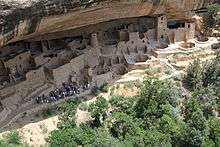 |
Colorado, 37°15′42″N 108°29′8″W / 37.26167°N 108.48556°W |
Cultural: (iii) |
— | 1978 | [145] | |
| Miguasha National Park | 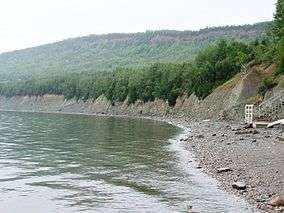 |
Gaspé Peninsula, Quebec 48°6′18″N 66°21′11″W / 48.10500°N 66.35306°W |
Natural: (viii) |
87 (210) | 1999 | [146] | |
| Mistaken Point | Newfoundland and Labrador 46°37′55″N 53°11′25″W / 46.63194°N 53.19028°W |
Natural: (viii) |
146 (360) | 2016 | [147] | ||
| Monarch Butterfly Biosphere Reserve | 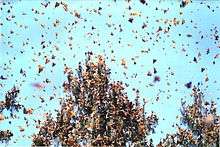 |
Michoacán and Mexico State, 19°36′23″N 100°14′30″W / 19.60639°N 100.24167°W |
Natural: (vii) |
13,552 (33,490); buffer zone 42,707 (105,530) | 2008 | [148] | |
| Monticello and the University of Virginia in Charlottesville | 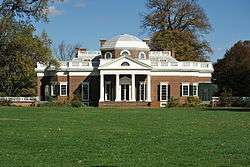 |
Virginia, 38°1′58″N 78°30′14″W / 38.03278°N 78.50389°W |
Cultural: (i), (iv), (vi) |
— | 1987 | Built between 1769 and 1809, Monticello was the plantation home of its designer, third President of the United States and author of the Declaration of Independence, Thomas Jefferson. Jefferson designed the early buildings that made up the University of Virginia in Charlottesville, inspired by his new ideas of university planning. The most prominent of these, The Rotunda, is a half-scale model of the Pantheon in Rome. | [149] |
| Monumental Earthworks of Poverty Point | 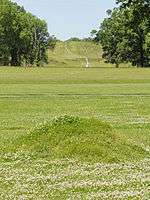 |
Louisiana, |
Cultural: (iii) |
163 (400) | 2014 | [150] | |
| Morne Trois Pitons National Park |  |
south central part of the island, 15°16′N 61°17′W / 15.267°N 61.283°W |
Natural: (viii), (x) |
6,857 (16,940) | 1997 | [151] | |
| Nahanni National Park |  |
Northwest Territories 61°33′N 125°35′W / 61.550°N 125.583°W |
Natural: (vii), (viii) |
476,560 (1,177,600) | 1978 | [152] | |
| National Archeological Park of Tierradentro | 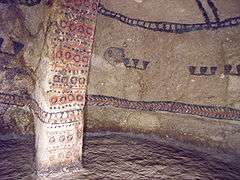 |
Inza, Cauca Department, 2°35′0″N 76°2′0″W / 2.58333°N 76.03333°W |
Cultural: (iii) |
— | 1995 | [153] | |
| National History Park – Citadel, Sans Souci, Ramiers |  |
Nord Department, 19°34′25″N 72°14′39″W / 19.57361°N 72.24417°W |
Cultural: (iv), (vi) |
— | 1982 | [154] | |
| Noel Kempff Mercado National Park | 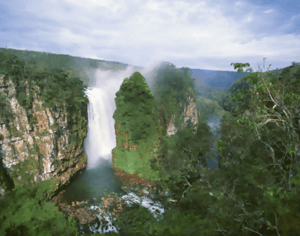 |
Santa Cruz Department, 14°16′S 60°52′W / 14.267°S 60.867°W |
Natural: (ix), (x) |
1,523,446 (3,764,520) | 2000 | [155] | |
| Old Havana and its Fortifications | .jpg) |
La Habana, 23°8′0″N 82°21′0″W / 23.13333°N 82.35000°W |
Cultural: (iv), (v) |
143 (350) | 1982 | Havana was founded in 1519 by Spanish colonists, growing to become one of the Caribbean's primary shipbuilding centers by the 17th century. The old city was built in the Baroque and Neoclassical styles. Historical landmarks in Old Havana include La Cabaña, the Cathedral of Havana and the Great Theatre of Havana. | [156] |
| Old Town Lunenburg | 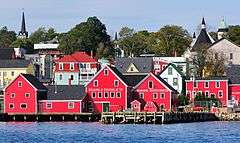 |
Nova Scotia 44°22′34″N 64°18′33″W / 44.37611°N 64.30917°W |
Cultural: (iv), (v) |
— | 1995 | [157] | |
| Olympic National Park | 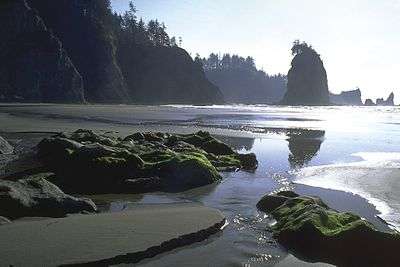 |
Washington, 47°45′N 123°27′W / 47.750°N 123.450°W |
Natural: (vii), (ix) |
369,660 (913,400) | 1981 | [158] | |
| Pantanal Conservation Area |  |
Mato Grosso do Sul and Mato Grosso, 17°43′S 57°23′W / 17.717°S 57.383°W |
Natural: (vii), (ix), (x) |
187,818 (464,110) | 2000 | [159] | |
| Península Valdés | 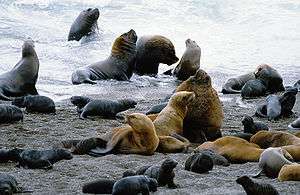 |
Viedma Department 42°30′S 64°0′W / 42.500°S 64.000°W |
Natural: (x) |
360,000 (890,000) | 1999 | [160] | |
| Pitons Management Area | |
near Soufrière, 13°48′26″N 61°4′13″W / 13.80722°N 61.07028°W |
Natural: (vii), (viii) |
2,909 (7,190) | 2004 | [161] | |
| Port, Fortresses and Group of Monuments, Cartagena | |
Bolívar Department, 10°25′0″N 75°32′0″W / 10.41667°N 75.53333°W |
Cultural: (iv), (vi) |
— | 1984 | [162] | |
| Pre-Hispanic City and National Park of Palenque |  |
Chiapas, 17°29′0″N 92°3′0″W / 17.48333°N 92.05000°W |
Cultural: (i), (ii), (iii), (iv) |
— | 1987 | [163] | |
| Precolumbian chiefdom settlements with stone spheres of the Diquís |  |
Palmar Sur, 8°54′41″N 83°28′39″W / 8.911389°N 83.477500°W |
Cultural: (iii) |
6,172 (15,250); buffer zone 6,080 (15,000) | 2014 | [164] | |
| Pre-Hispanic City of Chichen-Itza | |
Yucatán, 20°40′0″N 88°36′0″W / 20.66667°N 88.60000°W |
Cultural: (i), (ii), (iii) |
— | 1988 | [165] | |
| Pre-Hispanic City of Teotihuacan |  |
State of Mexico, 19°41′30″N 98°50′30″W / 19.69167°N 98.84167°W |
Cultural: (i), (ii), (iii), (iv), (vi) |
— | 1987 | [166] | |
| Pre-Hispanic Town of Uxmal | 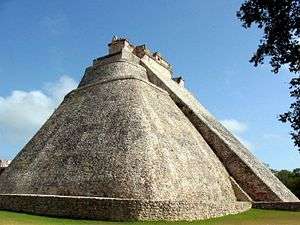 |
Yucatán, 20°21′42″N 89°46′13″W / 20.36167°N 89.77028°W |
Cultural: (i), (ii), (iii) |
— | 1996 | [167] | |
| Prehistoric Caves of Yagul and Mitla in the Central Valley of Oaxaca | 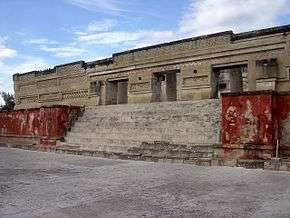 |
Oaxaca, 16°57′3″N 96°25′16″W / 16.95083°N 96.42111°W |
Cultural: (iii) |
1,515 (3,740); buffer zone 3,860 (9,500) | 2010 | [168] | |
| Protective town of San Miguel and the Sanctuary of Jesús Nazareno de Atotonilco |  |
Guanajuato, 20°54′52″N 100°44′47″W / 20.91444°N 100.74639°W |
Cultural: (ii), (iv) |
47 (120); buffer zone 47 (120) | 2008 | [169] | |
| Pueblo de Taos |  |
New Mexico, 36°26′20″N 105°32′30″W / 36.43889°N 105.54167°W |
Cultural: (iv) |
— | 1992 | [170] | |
| Quebrada de Humahuaca | |
Jujuy Province 23°12′0″S 65°20′56″W / 23.20000°S 65.34889°W |
Cultural: (ii), (iv), (v) |
172,116 (425,310); buffer zone 369,649 (913,420) | 2003 | [171] | |
| Qhapaq Ñan, Andean Road System |  |
|
Cultural: (ii), (iii), (iv), (vi) |
300,000,000 (740,000,000) | 2014 | An extensive Inca communication, trade and defense network of roads covering 30,000 km (19,000 mi) and built over several centuries, this extraordinary network through one of the world’s most extreme geographical terrains linked the snow-capped peaks of the Andes—at an altitude of more than 6,000 m (20,000 ft)—to the coast, running through hot rainforests, fertile valleys and absolute deserts. | [172] |
| Red Bay Basque Whaling Station |  |
Newfoundland and Labrador 51°43′37″N 56°25′46″W / 51.72694°N 56.42944°W |
Cultural: (iii), (iv) |
313 (770); buffer zone 285 (700) | 2013 | [173] | |
| Redwood National and State Parks |  |
California, 41°22′N 124°0′W / 41.367°N 124.000°W |
Natural: (vii), (ix) |
56,883 (140,560) | 1980 | [174] | |
| Rideau Canal | 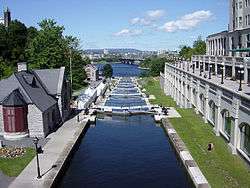 |
Ontario 45°0′N 75°46′W / 45.000°N 75.767°W |
Cultural: (i), (iv) |
21,455 (53,020); buffer zone 2,363 (5,840) | 2007 | The Rideau Canal (French: Canal Rideau), also known as the Rideau Waterway, connects the city of Ottawa, Ontario, Canada on the Ottawa River to the city of Kingston, Ontario on Lake Ontario. The canal was opened in 1832 as a precaution in case of war with the United States and is still in use today, with most of its original structures intact. The canal system uses sections of major rivers, including the Rideau and the Cataraqui, as well as some lakes. It is the oldest continuously operated canal system in North America. | [175] |
| Rio Abiseo National Park | — | San Martín, 7°45′S 77°15′W / 7.750°S 77.250°W |
Mixed: (iii), (vii), (ix), (x) |
274,520 (678,400) | 1990 [nb 16] |
The park was created in 1983 in order to protect the region's rainforest habitat. The park is home to many endemic species such as the yellow-tailed woolly monkey, which was thought to be extinct. The site is also listed under cultural criteria, as over 30 Pre-Columbian sites have been discovered since 1985. | [176] [177] |
| Rio de Janeiro: Carioca Landscapes Between the Mountain and the Sea | |
Rio de Janeiro, 24°50′S 43°11′W / 24.833°S 43.183°W |
Cultural: (vi) |
7,249 (17,910); buffer zone 8,621 (21,300) | 2012 | The listed site consists of an exceptional urban setting rather than built heritage. It encompasses the key natural elements that have shaped and inspired the development of the city: from the highest points of the Tijuca National Park’s mountains down to the sea. They also include the Botanical Gardens, established in 1808, Corcovado Mountain with its celebrated statue of Christ and the hills around Guanabara Bay, including the extensive designed landscapes along Copacabana Bay which have contributed to the outdoor living culture of this spectacular city. Rio de Janeiro is also recognized for the artistic inspiration it has provided to musicians, landscapers and urbanists. | [178] |
| Río Plátano Biosphere Reserve† |  |
La Mosquitia, 15°44′40″N 84°40′30″W / 15.74444°N 84.67500°W |
Natural: (vii), (viii), (ix), (x) |
500,000 (1,200,000) | 1982 | Endangered since 2011 | [179] |
| Rock Paintings of the Sierra de San Francisco |  |
Baja California Sur, 27°39′20″N 112°54′58″W / 27.65556°N 112.91611°W |
Cultural: (i), (iii) |
— | 1993 | [180] | |
| Ruins of León Viejo | 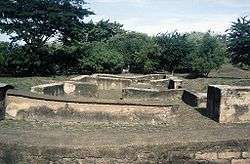 |
Puerto Momotombo, Municipality La Paz Centro, Department of León, 12°23′50″N 86°36′37″W / 12.39722°N 86.61028°W |
Cultural: (iii), (iv) |
— | 2000 | [181] | |
| Sacred City of Caral-Supe |  |
Lima, 10°53′30″S 77°31′17″W / 10.89167°S 77.52139°W |
Cultural: (ii), (iii), (iv) |
626 (1,550); buffer zone 14,620 (36,100) | 2009 | The archaeological site belonged to the Norte Chico civilization that inhabited the area during the Late Archaic period. Caral is one of 18 complex urban settlements in the region and features many monuments and pyramids. Caral is the earliest known American settlement. A quipu recovered from the site demonstrates its influence on later Andean cultures. | [182] |
| San Agustín Archaeological Park | 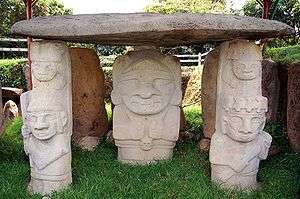 |
San Augustin and San José de Isnos, Huila Department, 1°55′0″N 76°14′0″W / 1.91667°N 76.23333°W |
Cultural: (iii) |
— | 1995 | [183] | |
| San Antonio Missions | |
Texas, 29°19′41″N 98°27′36″W / 29.328056°N 98.460000°W |
Cultural: (ii) |
301 (740); buffer zone 2,068 (5,110) | 2015 | [184] | |
| Sanctuary of Bom Jesus do Congonhas |  |
Congonhas, Minas Gerais, 20°29′59″S 43°51′28″W / 20.49972°S 43.85778°W |
Cultural: (i), (iv) |
— | 1985 | [185] | |
| Sangay National Park | |
Morona Santiago, Chimborazo and Tungurahua Provinces, 1°50′S 78°20′W / 1.833°S 78.333°W |
Natural: (vii), (viii), (ix), (x) |
271,925 (671,940) | 1983 | Endangered 1992–2005 | [186] |
| San Pedro de la Roca Castle, Santiago de Cuba | 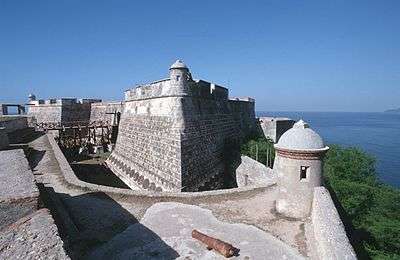 |
Santiago de Cuba Province, 19°58′0″N 75°52′15″W / 19.96667°N 75.87083°W |
Cultural: (iv), (v) |
— | 1997 | The large fort was built to defend the important port of Santiago de Cuba. The design of the fortification was based on Italian and Renaissance architecture. The complex of magazines, bastions, and batteries is one of the most complete and well-preserved Spanish-American defense fortifications. | [187] |
| São Francisco Square in the Town of São Cristóvão |  |
São Cristóvão, Sergipe, 11°0′58″S 37°12′36″W / 11.01611°S 37.21000°W |
Cultural: (ii), (iv) |
3.00 (7.4); buffer zone 2,500 (6,200) | 2010 | [188] | |
| Serra da Capivara National Park | |
Piauí, 8°25′0″S 42°20′0″W / 8.41667°S 42.33333°W |
Cultural: (iii) |
— | 1991 | [189] | |
| Sewell Mining Town |  |
Machalí, Cachapoal Province, O'Higgins Region 34°5′4″S 70°22′58″W / 34.08444°S 70.38278°W |
Cultural: (ii) |
17 (42); buffer zone 33 (82) | 2006 | [190] | |
| SGang Gwaay | 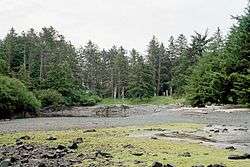 |
British Columbia, 52°5′42″N 131°13′13″W / 52.09500°N 131.22028°W |
Cultural: (iii) |
— | 1981 | [191] | |
| Sian Ka'an | 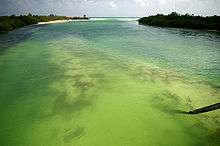 |
Quintana Roo, 19°23′N 87°48′W / 19.383°N 87.800°W |
Natural: (vii), (x) |
528,000 (1,300,000) | 1987 | [192] | |
| Statue of Liberty |  |
New York City, New York, 40°41′22″N 74°2′41″W / 40.68944°N 74.04472°W |
Cultural: (i), (vi) |
— | 1984 | [193] | |
| Talamanca Range-La Amistad Reserves / La Amistad National Park | 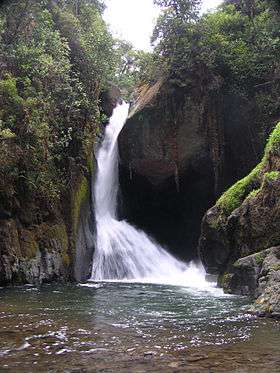 |
San José, Cartago, Limón and Puntarenas Provinces, 9°24′26″N 82°56′20″W / 9.40722°N 82.93889°W |
Natural: (vii), (viii), (ix), (x) |
567,845 (1,403,180) | 1983 [nb 17] |
[194] [195] | |
| Tikal National Park | 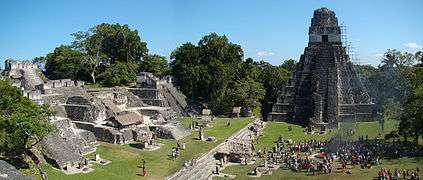 |
Petén Department, 17°13′N 89°37′W / 17.217°N 89.617°W |
Mixed: (i), (iii), (iv), (ix), (x) |
57,600 (142,000) | 1979 | [196] | |
| Tiwanaku: Spiritual and Political Centre of the Tiwanaku Culture |  |
Ingavi Province, La Paz Department, 16°33′30″S 68°40′40″W / 16.55833°S 68.67778°W |
Cultural: (iii), (iv) |
— | 2000 | [197] | |
| Trinidad and the Valley de los Ingenios | _02.jpg) |
Sancti Spíritus Province, 21°48′11″N 79°59′4″W / 21.80306°N 79.98444°W |
Cultural: (iv), (v) |
— | 1988 | The city of Trinidad was founded in the early 16th century. In 1518, Hernán Cortés began his expedition to conquer Mexico from the port at Trinidad. The city prospered throughout the colonial period in large part due to the success of the local sugar industry. The adjacent Valley de los Ingenios was the origin of the Cuban sugar industry, which emerged in the 18th century. It is home to numerous cane sugar mills, as well as cattle ranches and tobacco plantations. | [198] |
| Urban Historic Centre of Cienfuegos | Cienfuegos, 22°8′50″N 80°27′10″W / 22.14722°N 80.45278°W |
Cultural: (ii), (v) |
— | 2005 | Cienfuegos was founded in 1819 as a Spanish colony, though its first inhabitants were French immigrants. It became a trade center in the sugar cane, tobacco, and coffee trade because of its location on the Bay of Cienfuegos. Because of its establishment in the later colonial period, the architecture has more modern influences: including modern ideas of urban planning. | [199] | |
| Viñales Valley | 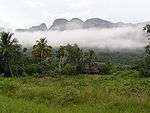 |
Pinar del Río Province, 22°37′N 83°43′W / 22.617°N 83.717°W |
Cultural: (iv) |
— | 1999 | The village of Viñales was founded in 1875 after the expansion of tobacco cultivation in the surrounding valley. The Valley features a karst topography, vernacular architecture, and traditional cultivation methods. The Valley was also the site of various military engagements in the Cuban War of Independence and Cuban Revolution. | [200] [201] |
| Waterton Glacier International Peace Park | 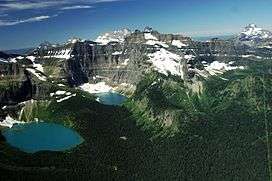 |
Alberta, Montana, 49°0′N 113°54′W / 49.000°N 113.900°W |
Natural: (vii), (ix) |
457,614 (1,130,790) | 1995 | [202] | |
| Whale Sanctuary of El Vizcaino | — |
Mulegé Municipality, Baja California Sur, 27°48′N 114°14′W / 27.800°N 114.233°W |
Natural: (x) |
370,950 (916,600) | 1993 | [203] | |
| Wood Buffalo National Park |  |
Alberta and Northwest Territories, 59°22′N 112°18′W / 59.367°N 112.300°W |
Natural: (vii), (ix), (x) |
4,480,000 (11,100,000) | 1983 | [204] | |
| Yellowstone National Park | |
Wyoming and small areas of Montana and Idaho, 44°30′N 110°50′W / 44.500°N 110.833°W |
Natural: (vii), (viii), (ix), (x) |
898,349 (2,219,870) | 1978 | Endangered 1995–2003 | [205] |
| Yosemite National Park | |
California, 37°45′N 119°36′W / 37.750°N 119.600°W |
Natural: (vii), (viii) |
308,283 (761,780) | 1984 | [206] |
See also
Notes
- ↑ Extended in 2003 to include the archaeological site of Panamá Viejo and name change from Historic District of Panamá, with the Salón Bolivar, Panama to the present name.
- ↑ Extended in 2004 to include the sector Santa Elena.
- ↑ The five sites are: Historic Centre of Mexico City and Xochimilco, Historic Monuments Zone of Querétaro, Historic Town of Guanajuato and Adjacent Mines, Protective town of San Miguel and the Sanctuary of Jesús Nazareno de Atotonilco, Historic Centre of Zacatecas.
- ↑ Extended in 1990 to include Mount Robson, Hamber and Mount Assiniboine Provincial Parks.
- ↑ Extended in 2003 to include the Amana Sustainable Development Reserve, the Demonstration area of the Mamirauá Sustainable Development Reserve and the Anavilhanas Ecological Station; and name change from Jaú National Park, Brazil to the present name.
- ↑ It is a Centre of Plant Diversity, an Endemic Bird Area of the World and a Global 200 ecoregion.
- ↑ Extension of the park's marine zone in 2002.
- ↑ Reasons include insufficient prevention of possibilities for the introduction of alien species, insufficient resource allocation for conservation agencies and park management, presence of a large number of illegal immigrants, rapid uncontrolled growth of tourism, fishing over-capacity and sports fishing.
- ↑ Extended in 1991 to include "the area protected by national legislation."
- ↑ Minor modification of boundaries in 2007 to include the Islas Marietas National Park and the San Lorenzo Marine Archipelago National Park.
- ↑ Islands populated by land in times of ocean level decline.
- ↑ Islands populated by sea and air
- ↑ Extended in 1984 to include the four Argentinian missions making it a trans-border site; and name change from The Ruins of São Miguel das Missões to the present name.
- ↑ Extended in 1992 to include the Glacier Bay National Park and in 1994 to include the Tatshenshini-Alsek Provincial Park. The name of the site was changed accordingly from Wrangell/St. Elias/Kluane at the time of inscription to Glacier Bay/Wrangell/St. Elias/Kluane in 1992 to the present name in 1994.
- ↑ Minor modification of boundaries in 2009 to include all of the National Park in the World Heritage Site.
- ↑ In 1992 inscription under cultural criteria (iii) in addition to original inscription as natural site based on criteria (vii), (ix), (x).
- ↑ Modification of boundaries in 1990 to exclude areas that are not of outstanding universal value and to include the extended Chirripó and Talamanca National Parks.
References
- General
- "World Heritage Committee: Twenty-ninth session" (PDF). UNESCO. Retrieved 26 June 2011.
- "World Heritage Committee: Thirtieth session" (PDF). UNESCO. Retrieved 26 June 2011.
- "World Heritage Committee: Thirty-first session" (PDF). UNESCO. Retrieved 26 June 2011.
- "World Heritage Committee: Thirty-third session" (PDF). UNESCO. Retrieved 26 June 2011.
- "World Heritage Committee: Thirty-fourth session" (PDF). UNESCO. Retrieved 26 June 2011.
- Notes
- ↑ "World Heritage List". UNESCO. Retrieved 28 May 2010.
- ↑ "The Criteria for Selection". UNESCO. Retrieved 10 September 2011.
- ↑ "Agave Landscape and Ancient Industrial Facilities of Tequila". UNESCO. Retrieved 26 June 2011.
- ↑ "Alejandro de Humboldt National Park". UNESCO. Retrieved 28 May 2010.
- ↑ "Solenodon cubanus". International Union for Conservation of Nature. Retrieved November 12, 2010.
- ↑ "Ancient Maya City of Calakmul, Campeche". UNESCO. Retrieved 26 June 2011.
- ↑ "Antigua Guatemala". UNESCO. Retrieved 28 May 2010.
- ↑ "Aqueduct of Padre Tembleque Hydraulic System". UNESCO. Retrieved 6 July 2015.
- ↑ "Archaeological Landscape of the First Coffee Plantations in the South-East of Cuba". UNESCO. Retrieved 28 May 2010.
- ↑ "Archaeological Monuments Zone of Xochicalco". UNESCO. Retrieved 26 June 2011.
- ↑ "Archaeological Park and Ruins of Quirigua". UNESCO. Retrieved 28 May 2010.
- ↑ "Archaeological Site of Panamá Viejo and Historic District of Panamá". UNESCO. Retrieved 28 May 2010.
- ↑ "Decision - 27COM 8C.40 - Archaeological Site of Panamá Viejo and Historic District of Panamá (Panama)". UNESCO. Retrieved 13 September 2011.
- ↑ "Archaeological Zone of Paquimé, Casas Grandes". UNESCO. Retrieved 26 June 2011.
- ↑ "Archipiélago de Revillagigedo". UNESCO. Retrieved 19 July 2016.
- ↑ "Area de Conservación Guanacaste". UNESCO. Retrieved 28 May 2010.
- ↑ "Atlantic Forest South-East Reserves". UNESCO. Retrieved 28 May 2010.
- ↑ "Belize Barrier Reef Reserve System". UNESCO. Retrieved 28 May 2010.
- ↑ 33rd session 2009, pp. 81–82
- ↑ "Blue and John Crow Mountains". UNESCO. Retrieved 6 July 2015.
- ↑ "Brasília". UNESCO. Retrieved 28 May 2010.
- ↑ "Brazilian Atlantic Islands: Fernando de Noronha and Atol das Rocas Reserves". UNESCO. Retrieved 28 May 2010.
- ↑ "Brimstone Hill Fortress National Park". UNESCO. Retrieved 28 May 2010.
- ↑ "Cahokia Mounds State Historic Site". UNESCO. Retrieved 28 May 2010.
- ↑ "Camino Real de Tierra Adentro". UNESCO. Retrieved 26 June 2011.
- ↑ "Canadian Rocky Mountain Parks". UNESCO. Retrieved 28 May 2010.
- ↑ "Decision - 14COM VII.E - Boundary Modifications: Canadian Rocky Mountains Parks (Canada)". UNESCO. Retrieved 26 September 2011.
- ↑ "Canaima National Park". UNESCO. Retrieved 28 May 2010.
- ↑ "Carlsbad Caverns National Park". UNESCO. Retrieved 28 May 2010.
- ↑ "Central Amazon Conservation Complex". UNESCO. Retrieved 28 May 2010.
- ↑ "Decision - 27COM 8C.10 - Central Amazon Conservation Complex (Brazil)". UNESCO. Retrieved 26 September 2011.
- ↑ "Central Suriname Nature Reserve". UNESCO. Retrieved 28 May 2010.
- ↑ "Central University City Campus of the Universidad Nacional Autónoma de México (UNAM)". UNESCO. Retrieved 26 June 2011.
- ↑ "Cerrado Protected Areas: Chapada dos Veadeiros and Emas National Parks". UNESCO. Retrieved 28 May 2010.
- ↑ "Chaco Culture". UNESCO. Retrieved 28 May 2010.
- ↑ "Chan Chan Archaeological Zone". UNESCO. Retrieved September 23, 2010.
- ↑ "Chan Chan Archaeological Zone – Threats to the Site". UNESCO. Retrieved September 23, 2010.
- ↑ "Historia". Complejo Arqueologico de Chan Chan (in Spanish). Patrimonio Mundial de la Humanidad. Retrieved September 23, 2010.
- ↑ "Chavín (Archaeological Site)". UNESCO. Retrieved September 22, 2010.
- ↑ "Chavín de Huantar, Peru". Global Heritage Network. Retrieved October 24, 2010.
- ↑ "Churches of Chiloé". UNESCO. Retrieved 28 May 2010.
- ↑ "City of Cuzco". UNESCO. Retrieved September 21, 2010.
- ↑ "City of Potosí". UNESCO. Retrieved 8 September 2011.
- ↑ "City of Quito". UNESCO. Retrieved 28 May 2010.
- ↑ "Ciudad Universitaria de Caracas". UNESCO. Retrieved 28 May 2010.
- ↑ "Cocos Island National Park". UNESCO. Retrieved 28 May 2010.
- ↑ "Decision - 26COM 23.4 - Cocos Island National Park (Costa Rica)". UNESCO. Retrieved 28 May 2010.
- ↑ "Coffee Cultural Landscape of Colombia". UNESCO. Retrieved 28 May 2010.
- ↑ "Coiba National Park and its Special Zone of Marine Protection". UNESCO. Retrieved 28 May 2010.
- ↑ "Colonial City of Santo Domingo". UNESCO. Retrieved 28 May 2010.
- ↑ "Coro and its Port". UNESCO. Retrieved 28 May 2010.
- ↑ 29th session 2005, pp. 102–103
- ↑ "Cueva de las Manos, Río Pinturasa". UNESCO. Retrieved 8 September 2011.
- ↑ "Darien National Park". UNESCO. Retrieved 28 May 2010.
- ↑ "Desembarco del Granma National Park". UNESCO. Retrieved 28 May 2010.
- ↑ "In Depth: Dear Granma". Bayamo Travel Guide. Frommers. Retrieved November 12, 2010.
- ↑ "Dinosaur Provincial Park". UNESCO. Retrieved 28 May 2010.
- ↑ "Discovery Coast Atlantic Forest Reserves". UNESCO. Retrieved 28 May 2010.
- ↑ "Earliest 16th-Century Monasteries on the Slopes of Popocatepetl". UNESCO. Retrieved 26 June 2011.
- ↑ "El Pinacate and Gran Desierto de Altar Biosphere Reserve". UNESCO. Retrieved 25 June 2013.
- ↑ "El Tajin, Pre-Hispanic City". UNESCO. Retrieved 26 June 2011.
- ↑ "Everglades National Park". UNESCO. Retrieved 28 May 2010.
- ↑ "World Heritage Committee: Seventeenth session" (PDF). UNESCO. pp. 20–21. Retrieved 26 June 2011.
- ↑ 34th session 2010, pp. 82–83
- ↑ "Fortifications on the Caribbean Side of Panama: Portobelo-San Lorenzo". UNESCO. Retrieved 28 May 2010.
- ↑ "Franciscan Missions in the Sierra Gorda of Querétaro". UNESCO. Retrieved 26 June 2011.
- ↑ "Fray Bentos Cultural-Industrial Landscape". UNESCO. Retrieved 6 July 2015.
- ↑ "Fuerte de Samaipata". UNESCO. Retrieved 8 September 2011.
- ↑ "Galápagos Islands". UNESCO. Retrieved 26 June 2011.
- ↑ 30th session 2006, pp. 70–71
- ↑ 31st session 2007, pp. 68–69
- ↑ 34th session 2010, pp. 34–35
- ↑ "Grand Canyon National Park". UNESCO. Retrieved 28 May 2010.
- ↑ "Great Smoky Mountains National Park". UNESCO. Retrieved 28 May 2010.
- ↑ "Gros Morne National Park". UNESCO. Retrieved 28 May 2010.
- ↑ "Head-Smashed-In Buffalo Jump". UNESCO. Retrieved 28 May 2010.
- ↑ "Historical Centre of the City of Arequipa". UNESCO. Retrieved September 28, 2010.
- ↑ "Historic Area of Willemstad, Inner City and Harbour, Curaçao". UNESCO. Retrieved 28 May 2010.
- ↑ "Historic Bridgetown and its Garrison". UNESCO. Retrieved 8 September 2011.
- ↑ "Historic Centre of Camagüey". UNESCO. Retrieved 28 May 2010.
- ↑ "Historic Centre of Salvador de Bahia". UNESCO. Retrieved 28 May 2010.
- ↑ "Historic Centre of Santa Ana de los Ríos de Cuenca". UNESCO. Retrieved 28 May 2010.
- ↑ "Historic Centre of Lima". UNESCO. Retrieved September 23, 2010.
- ↑ "Decision - 15COM XV.E - Extension: Historic Centre of Lima (Peru)". UNESCO. Retrieved September 23, 2010.
- ↑ "Historic Centre of Mexico City and Xochimilco". UNESCO. Retrieved 26 June 2011.
- ↑ "Historic Centre of Morelia". UNESCO. Retrieved 26 June 2011.
- ↑ "Historic Centre of Oaxaca and Archaeological Site of Monte Albán". UNESCO. Retrieved 26 June 2011.
- ↑ "Historic Centre of Puebla". UNESCO. Retrieved 26 June 2011.
- ↑ "Historic Centre of Santa Cruz de Mompox". UNESCO. Retrieved 28 May 2010.
- ↑ "Historic Centre of São Luís". UNESCO. Retrieved 28 May 2010.
- ↑ "Historic Centre of the Town of Diamantina". UNESCO. Retrieved 28 May 2010.
- ↑ "Historic Centre of the Town of Goiás". UNESCO. Retrieved 10 September 2011.
- ↑ "Historic Centre of the Town of Olinda". UNESCO. Retrieved 10 September 2011.
- ↑ "Historic Centre of Zacatecas". UNESCO. Retrieved 26 June 2011.
- ↑ "Historic City of Sucre". UNESCO. Retrieved 8 September 2011.
- ↑ "Historic District of Old Québec". UNESCO. Retrieved 28 May 2010.
- ↑ "Historic Fortified Town of Campeche". UNESCO. Retrieved 26 June 2011.
- ↑ "Historic Inner City of Paramaribo". UNESCO. Retrieved 28 May 2010.
- ↑ "Historic Monuments Zone of Querétaro". UNESCO. Retrieved 26 June 2011.
- ↑ "Historic Monuments Zone of Tlacotalpan". UNESCO. Retrieved 26 June 2011.
- ↑ "Historic Quarter of the City of Colonia del Sacramento". UNESCO. Retrieved 28 May 2010.
- ↑ "Historic Quarter of the Seaport City of Valparaíso". UNESCO. Retrieved 28 May 2010.
- ↑ "Historic Sanctuary of Machu Picchu". UNESCO. Retrieved September 21, 2010.
- ↑ "Machu Picchu". Archaeological Sites. Minnesota State University. October 14, 2004. Archived from the original on 2010-08-27. Retrieved September 21, 2010.
- ↑ "Historic Town of Guanajuato and Adjacent Mines". UNESCO. Retrieved 26 June 2011.
- ↑ "Historic Town of Ouro Preto". UNESCO. Retrieved 10 September 2011.
- ↑ "Historic Town of St George and Related Fortifications, Bermuda". UNESCO. Retrieved 8 September 2011.
- ↑ "Hospicio Cabañas, Guadalajara". UNESCO. Retrieved 26 June 2011.
- ↑ "Huascarán National Park". UNESCO. Retrieved September 23, 2010.
- ↑ "Humberstone and Santa Laura Saltpeter Works". UNESCO. Retrieved 28 May 2010.
- ↑ 29th session 2005, pp. 142–143
- ↑ "Iguaçu National Park". UNESCO. Retrieved 10 September 2011.
- ↑ "Iguazu National Park". UNESCO. Retrieved 8 September 2011.
- ↑ "Ilulissat Icefjord". UNESCO. Retrieved 28 May 2010.
- ↑ "Independence Hall". UNESCO. Retrieved 28 May 2010.
- ↑ "Ischigualasto / Talampaya Natural Parks". UNESCO. Retrieved 8 September 2011.
- ↑ "Islands and Protected Areas of the Gulf of California". UNESCO. Retrieved 26 June 2011.
- ↑ "Decision - 31COM 8B.53 - Nomination of natural, mixed and cultural properties to the world heritage list - Islands and Protected Areas of the Gulf of California". UNESCO. Retrieved 26 June 2011.
- ↑ "Jesuit Block and Estancias of Córdoba". UNESCO. Retrieved 8 September 2011.
- ↑ "Jesuit Missions of La Santísima Trinidad de Paraná and Jesús de Tavarangue". UNESCO. Retrieved 28 May 2010.
- ↑ "Jesuit Missions of the Chiquitos". UNESCO. Retrieved 8 September 2011.
- ↑ "Jesuit Missions of the Guaranis: San Ignacio Mini, Santa Ana, Nuestra Señora de Loreto and Santa Maria Mayor (Argentina), Ruins of Sao Miguel das Missoes (Brazil)". UNESCO. Retrieved 8 September 2011.
- ↑ "Jesuit Missions of the Guaranis". UNESCO. Retrieved 8 September 2011.
- ↑ "Joggins Fossil Cliffs". UNESCO. Retrieved 28 May 2010.
- ↑ "Joya de Cerén Archaeological Site". UNESCO. Retrieved 28 May 2010.
- ↑ "Kluane / Wrangell-St Elias / Glacier Bay / Tatshenshini-Alsek". UNESCO. Retrieved 28 May 2010.
- ↑ "Decision - 16COM X.C - Extension: Glacier Bay National Park - extension of the Wrangell/St.Elias/Kluane site of Canada-USA (United States of America)". UNESCO. Retrieved 28 May 2010.
- ↑ "Decision - 18COM XI - Extension: Tatshenshini-Alsek Provincial Wilderness Park (extension of the Glacier Bay/Wrangell/St. Elias/Kluane site) (Canada/USA)". UNESCO. Retrieved 28 May 2010.
- ↑ "La Fortaleza and San Juan National Historic Site in Puerto Rico". UNESCO. Retrieved 28 May 2010.
- ↑ "Landscape of Grand Pré". UNESCO. Retrieved 4 Aug 2013.
- ↑ "L'Anse aux Meadows National Historic Site". UNESCO. Retrieved 28 May 2010.
- ↑ "León Cathedral". UNESCO. Retrieved 28 May 2010.
- ↑ "Lines and Geoglyphs of Nazca and Pampas de Jumana". UNESCO. Retrieved September 27, 2010.
- ↑ Brown, David & Helaine Silverman. "New evidence for the date of the Nazca lines". Antiquity. 65 (247): 208–220. Retrieved September 27, 2010.
- ↑ "Los Glaciares". UNESCO. Retrieved 8 September 2011.
- ↑ "Los Katíos National Park". UNESCO. Retrieved 28 May 2010.
- ↑ 33rd session 2009, p. 83
- ↑ "Luis Barragán House and Studio". UNESCO. Retrieved 26 June 2011.
- ↑ "Malpelo Fauna and Flora Sanctuary". UNESCO. Retrieved 28 May 2010.
- ↑ "Mammoth Cave National Park". UNESCO. Retrieved 28 May 2010.
- ↑ "Manú National Park". UNESCO. Retrieved September 23, 2010.
- ↑ "Decision - 33COM 8B.39 - Natural properties - Examination of minor boundary modifications - Manú National Park (Peru)". UNESCO. Retrieved September 23, 2010.
- ↑ "Conservation". The Living Edens – Manu. Public Broadcasting Service. Retrieved September 23, 2010.
- ↑ "Maya Site of Copan". UNESCO. Retrieved 28 May 2010.
- ↑ "Mesa Verde National Park". UNESCO. Retrieved 28 May 2010.
- ↑ "Miguasha National Park". UNESCO. Retrieved 28 May 2010.
- ↑ "Mistaken Point". UNESCO. Retrieved 18 July 2016.
- ↑ "Monarch Butterfly Biosphere Reserve". UNESCO. Retrieved 26 June 2011.
- ↑ "Monticello and the University of Virginia in Charlottesville". UNESCO. Retrieved 28 May 2010.
- ↑ "Monumental Earthworks of Poverty Point". UNESCO. Retrieved June 23, 2014.
- ↑ "Morne Trois Pitons National Park". UNESCO. Retrieved 28 May 2010.
- ↑ "Nahanni National Park". UNESCO. Retrieved 28 May 2010.
- ↑ "National Archeological Park of Tierradentro". UNESCO. Retrieved 28 May 2010.
- ↑ "National History Park – Citadel, Sans Souci, Ramiers". UNESCO. Retrieved 28 May 2010.
- ↑ "Noel Kempff Mercado National Park". UNESCO. Retrieved 8 September 2011.
- ↑ "Old Havana and its Fortifications". UNESCO. Retrieved 28 May 2010.
- ↑ "Old Town Lunenburg". UNESCO. Retrieved 28 May 2010.
- ↑ "Olympic National Park". UNESCO. Retrieved 28 May 2010.
- ↑ "Pantanal Conservation Area". UNESCO. Retrieved 10 September 2011.
- ↑ "Península Valdés". UNESCO. Retrieved 8 September 2011.
- ↑ "Pitons Management Area". UNESCO. Retrieved 28 May 2010.
- ↑ "Port, Fortresses and Group of Monuments, Cartagena". UNESCO. Retrieved 28 May 2010.
- ↑ "Pre-Hispanic City and National Park of Palenque". UNESCO. Retrieved 26 June 2011.
- ↑ "Precolumbian chiefdom settlements with stone spheres of the Diquís". UNESCO. Retrieved 23 June 2014.
- ↑ "Pre-Hispanic City of Chichen-Itza". UNESCO. Retrieved 26 June 2011.
- ↑ "Pre-Hispanic City of Teotihuacan". UNESCO. Retrieved 26 June 2011.
- ↑ "Pre-Hispanic Town of Uxmal". UNESCO. Retrieved 26 June 2011.
- ↑ "Prehistoric Caves of Yagul and Mitla in the Central Valley of Oaxaca". UNESCO. Retrieved 26 June 2011.
- ↑ "Protective town of San Miguel and the Sanctuary of Jesús Nazareno de Atotonilco". UNESCO. Retrieved 26 June 2011.
- ↑ "Pueblo de Taos". UNESCO. Retrieved 28 May 2010.
- ↑ "Quebrada de Humahuaca". UNESCO. Retrieved 8 September 2011.
- ↑ "Qhapaq Ñan, Andean Road System". UNESCO. Retrieved 2 August 2014.
- ↑ "Red Bay Basque Whaling Station". UNESCO. Retrieved 4 August 2013.
- ↑ "Redwood National and State Parks". UNESCO. Retrieved 28 May 2010.
- ↑ "Rideau Canal". UNESCO. Retrieved 28 May 2010.
- ↑ "Rio Abiseo National Park". UNESCO. Retrieved September 24, 2010.
- ↑ "Decision - 16COM X.A - Inscription: Rio Abiseo National Park (Peru)". UNESCO. Retrieved September 24, 2010.
- ↑ "Rio de Janeiro: Carioca Landscapes between the Mountain and the Sea". UNESCO. Retrieved July 2, 2011.
- ↑ "Río Plátano Biosphere Reserve". UNESCO. Retrieved 28 May 2010.
- ↑ "Rock Paintings of the Sierra de San Francisco". UNESCO. Retrieved 26 June 2011.
- ↑ "Ruins of León Viejo". UNESCO. Retrieved 28 May 2010.
- ↑ "Sacred City of Caral-Supe". UNESCO. Retrieved September 28, 2010.
- ↑ "San Agustín Archaeological Park". UNESCO. Retrieved 28 May 2010.
- ↑ "San Antonio Missions". UNESCO. Retrieved 6 July 2015.
- ↑ "Sanctuary of Bom Jesus do Congonhas". UNESCO. Retrieved 10 September 2011.
- ↑ "Sangay National Park". UNESCO. Retrieved 28 May 2010.
- ↑ "San Pedro de la Roca Castle, Santiago de Cuba". UNESCO. Retrieved 28 May 2010.
- ↑ "São Francisco Square in the Town of São Cristóvão". UNESCO. Retrieved 10 September 2011.
- ↑ "Serra da Capivara National Park". UNESCO. Retrieved 10 September 2011.
- ↑ "Sewell Mining Town". UNESCO. Retrieved 28 May 2010.
- ↑ "SGang Gwaay". UNESCO. Retrieved 28 May 2010.
- ↑ "Sian Ka'an". UNESCO. Retrieved 26 June 2011.
- ↑ "Statue of Liberty". UNESCO. Retrieved 28 May 2010.
- ↑ "Talamanca Range-La Amistad Reserves / La Amistad National Park". UNESCO. Retrieved 28 May 2010.
- ↑ "Decision - 14COM IX - SOC: La Amistad/Talamanca Range (Costa Rica)". UNESCO. Retrieved 28 May 2010.
- ↑ "Tikal National Park". UNESCO. Retrieved 28 May 2010.
- ↑ "Tiwanaku: Spiritual and Political Centre of the Tiwanaku Culture". UNESCO. Retrieved 8 September 2011.
- ↑ "Trinidad and the Valley de los Ingenios". UNESCO. Retrieved 28 May 2010.
- ↑ "Urban Historic Centre of Cienfuegos". UNESCO. Retrieved 28 May 2010.
- ↑ "Viñales Valley". UNESCO. Retrieved 28 May 2010.
- ↑ "Viñales (Cuba)" (pdf). UNESCO. Retrieved October 22, 2010.
- ↑ "Waterton Glacier International Peace Park". UNESCO. Retrieved 28 May 2010.
- ↑ "Whale Sanctuary of El Vizcaino". UNESCO. Retrieved 26 June 2011.
- ↑ "Wood Buffalo National Park". UNESCO. Retrieved 28 May 2010.
- ↑ "Yellowstone National Park". UNESCO. Retrieved 26 June 2011.
- ↑ "Yosemite National Park". UNESCO. Retrieved 26 June 2011.
External links
- UNESCO World Heritage Centre official website
- List of UNESCO World Heritage Sites official website
- VRheritage.org - documentation of World Heritage Sites
- Worldheritage-Forum - Information and Weblog on World Heritage Issues
This article is issued from Wikipedia - version of the 11/8/2016. The text is available under the Creative Commons Attribution/Share Alike but additional terms may apply for the media files.
